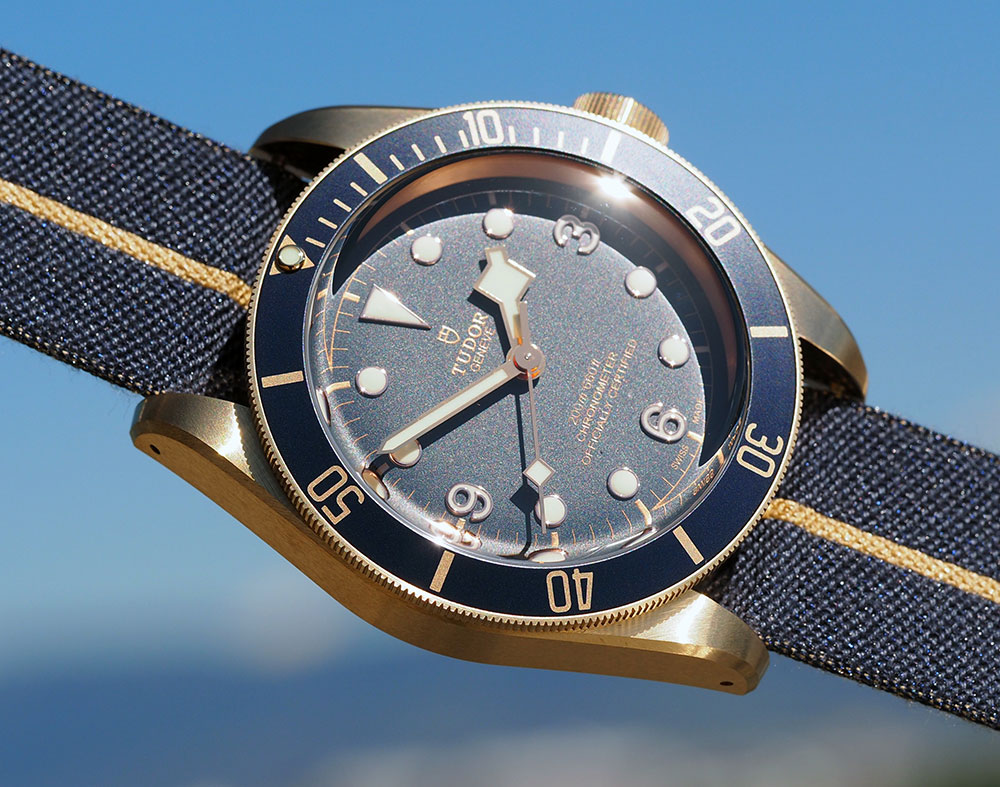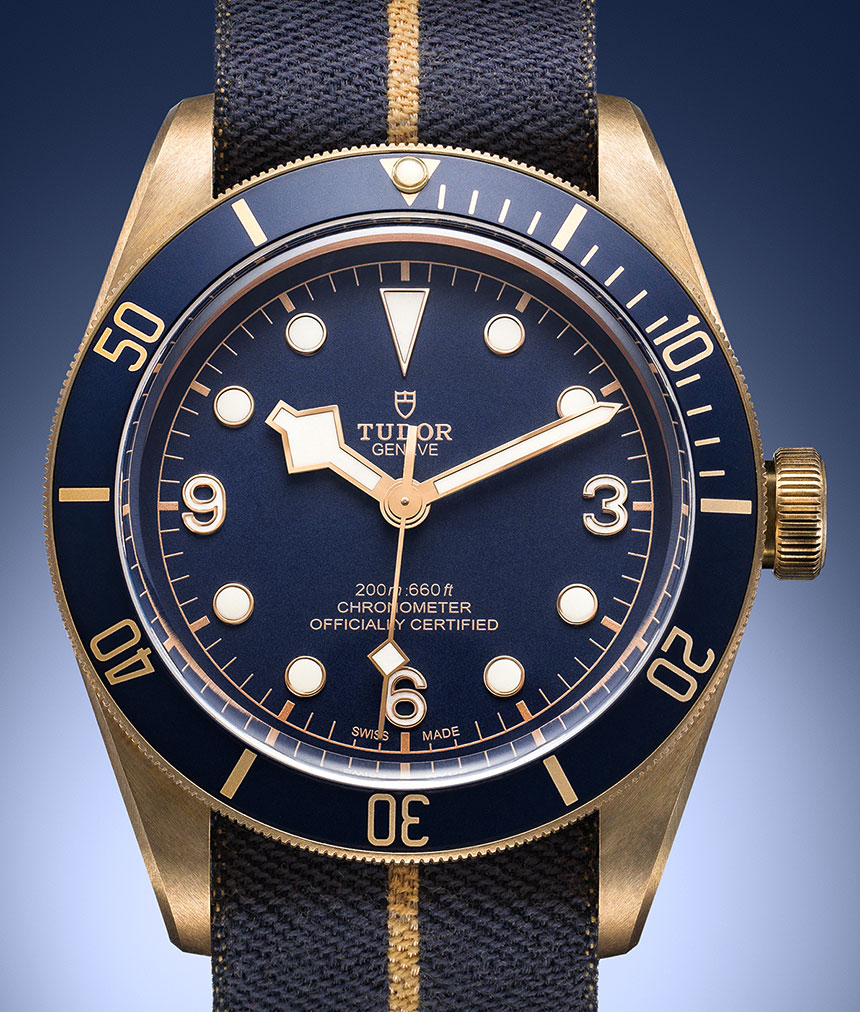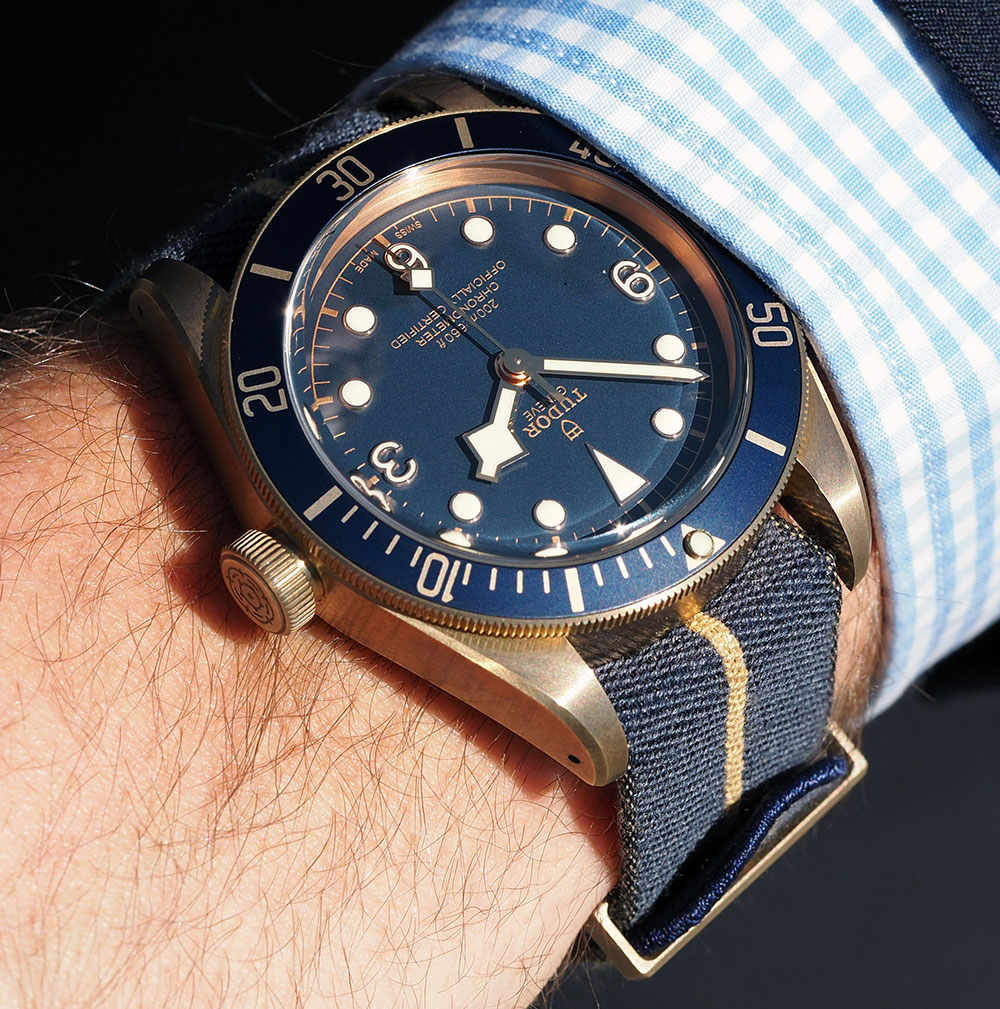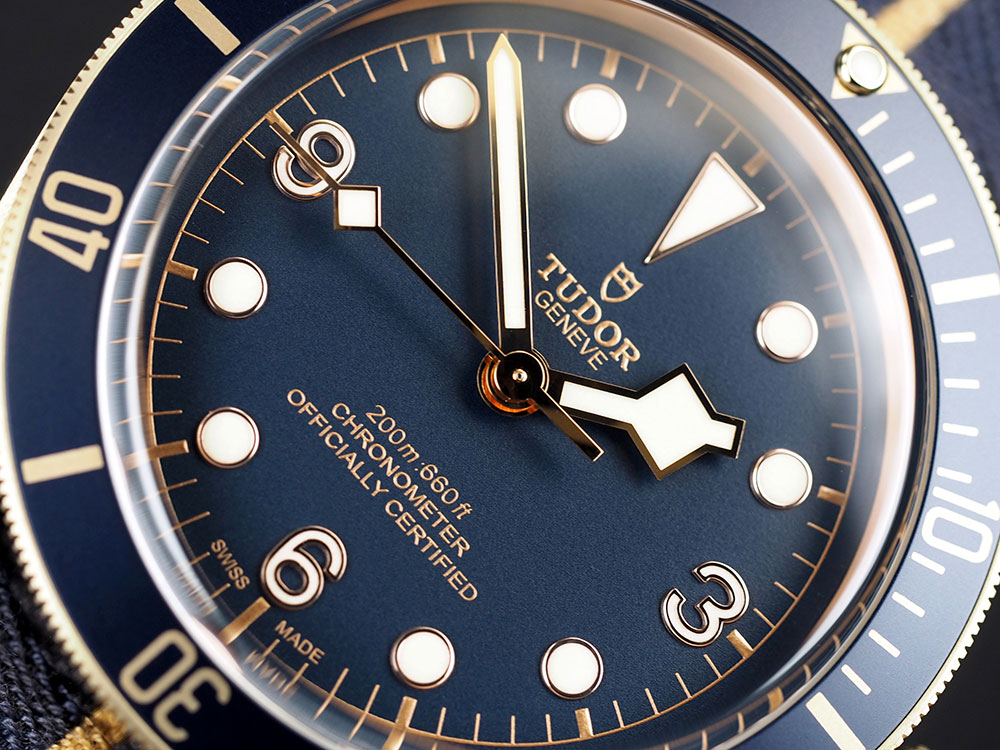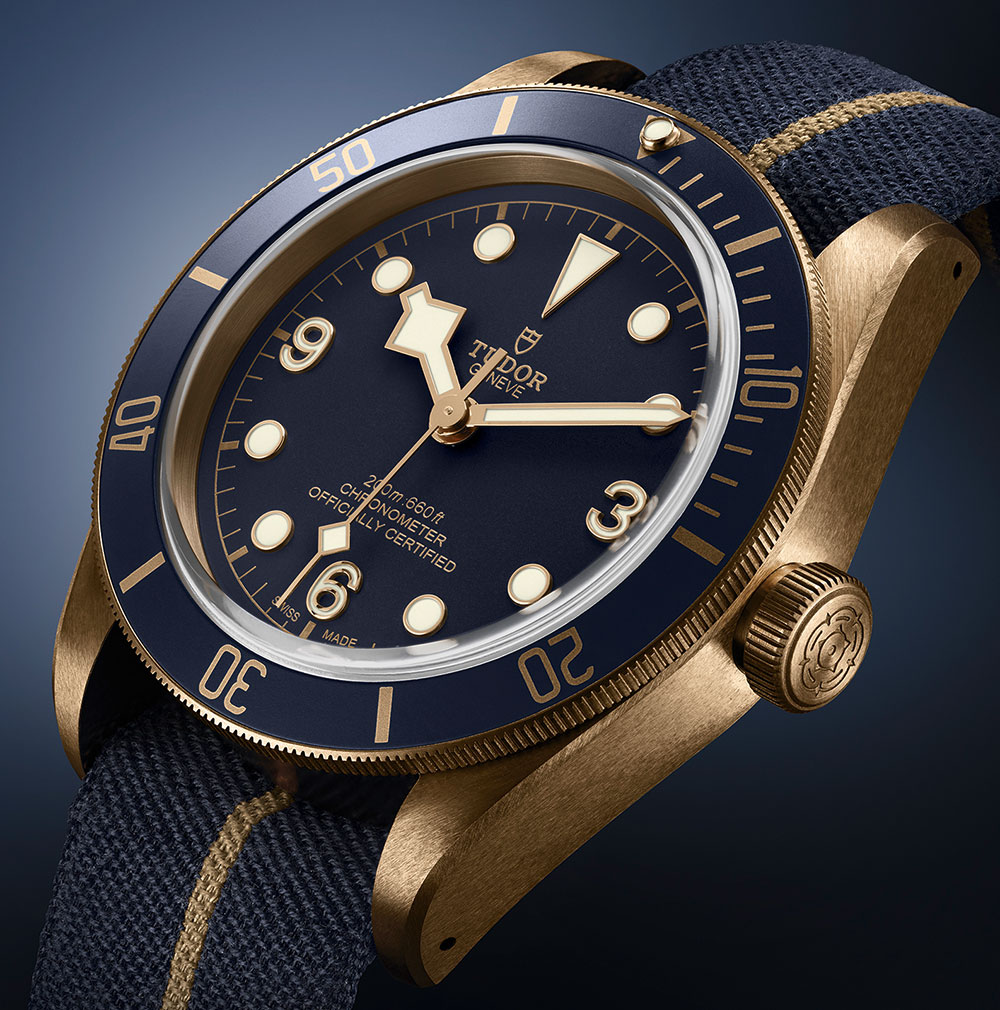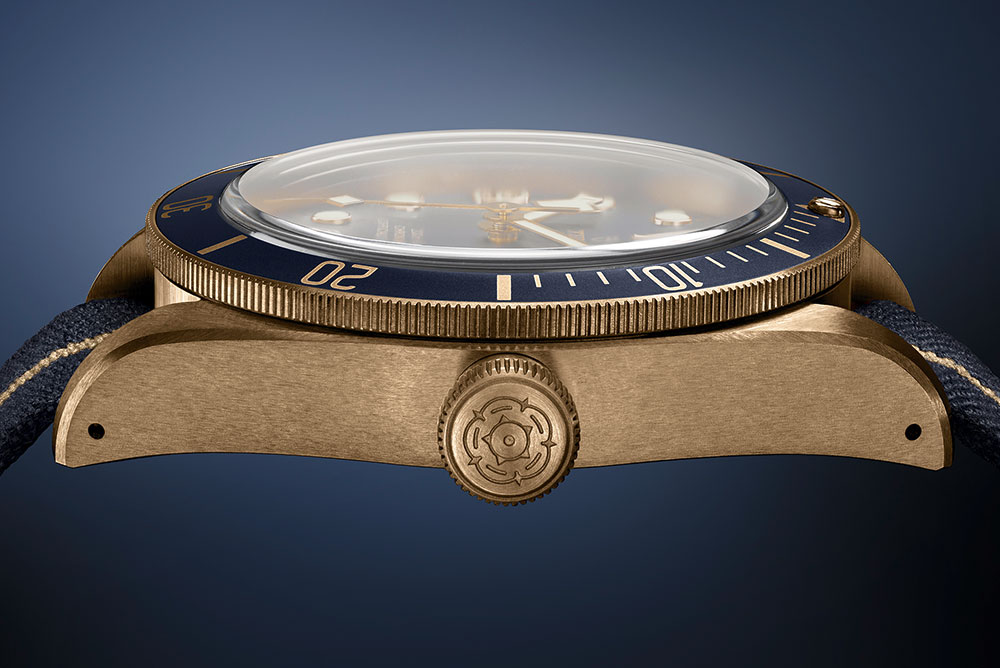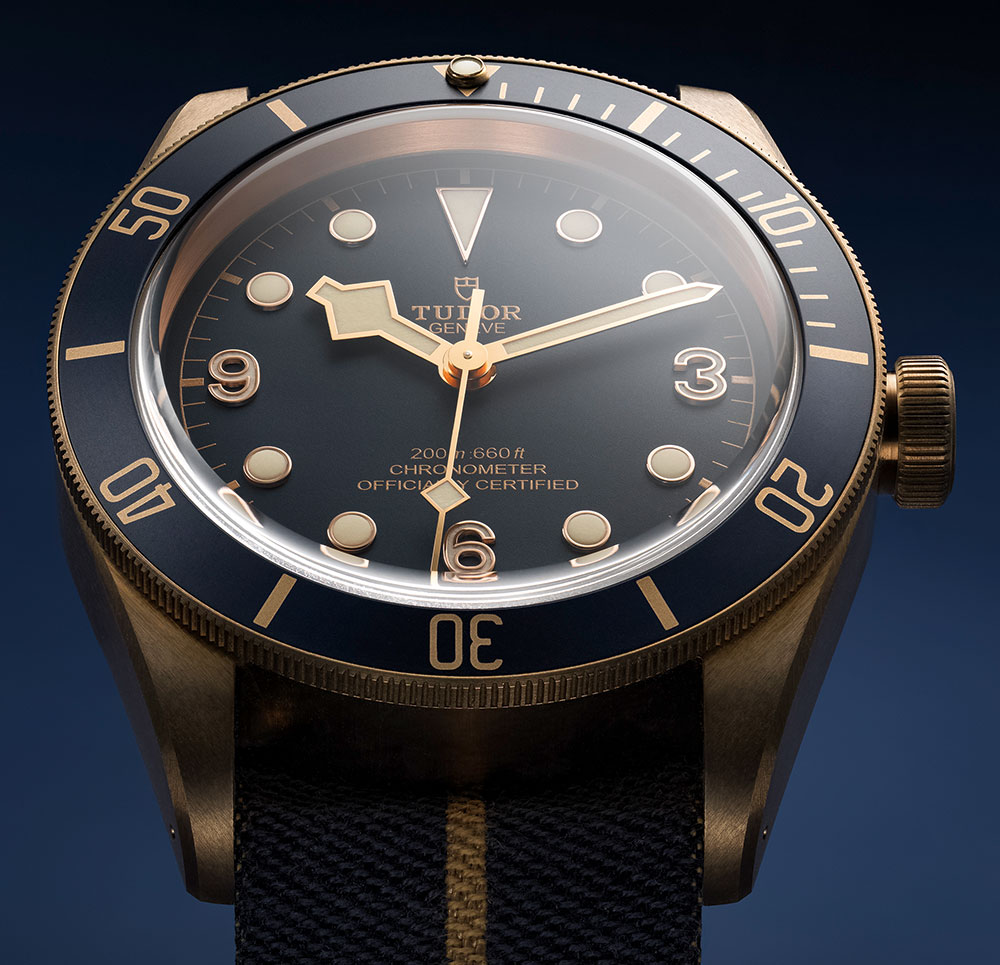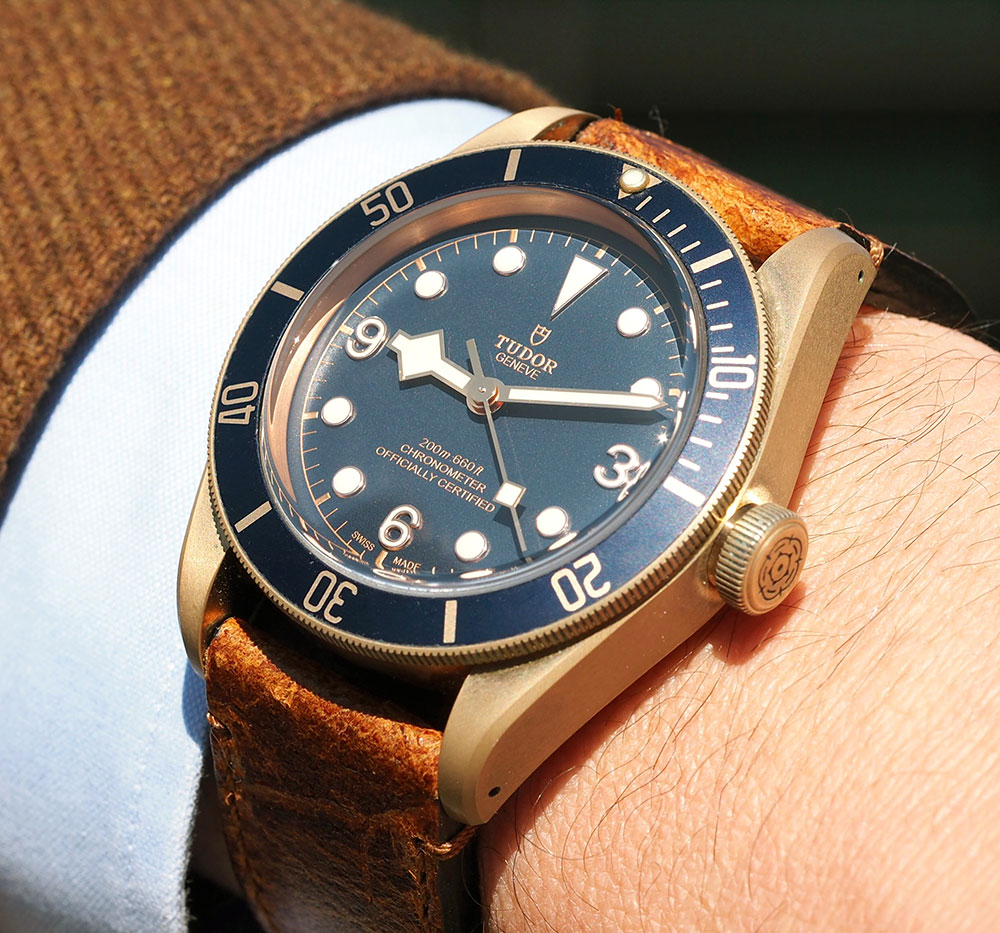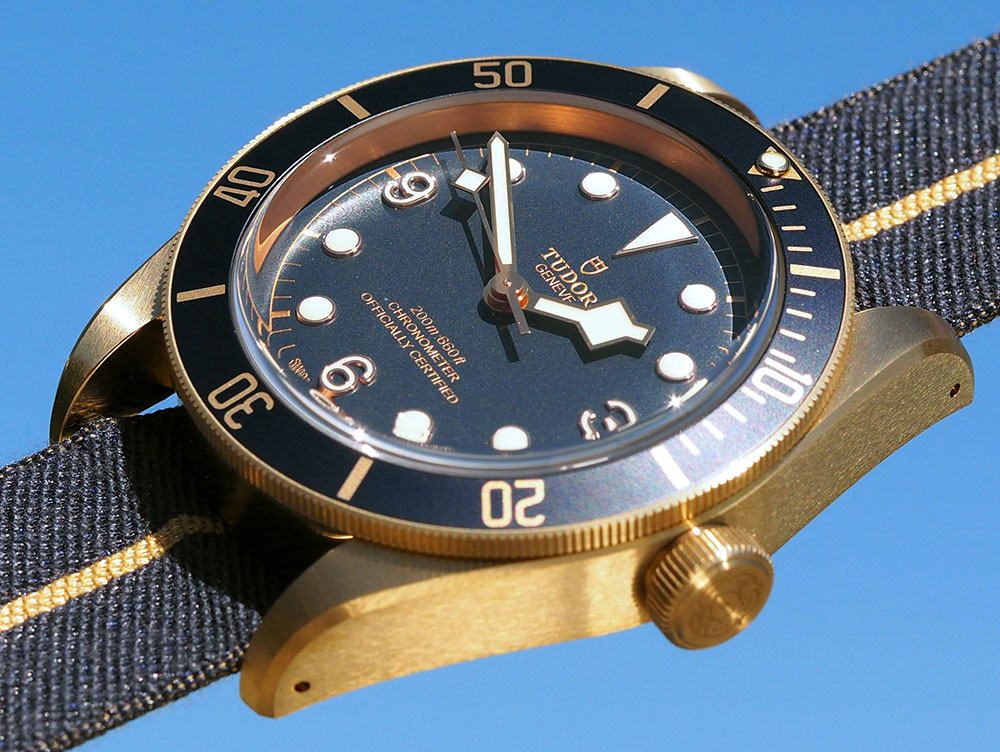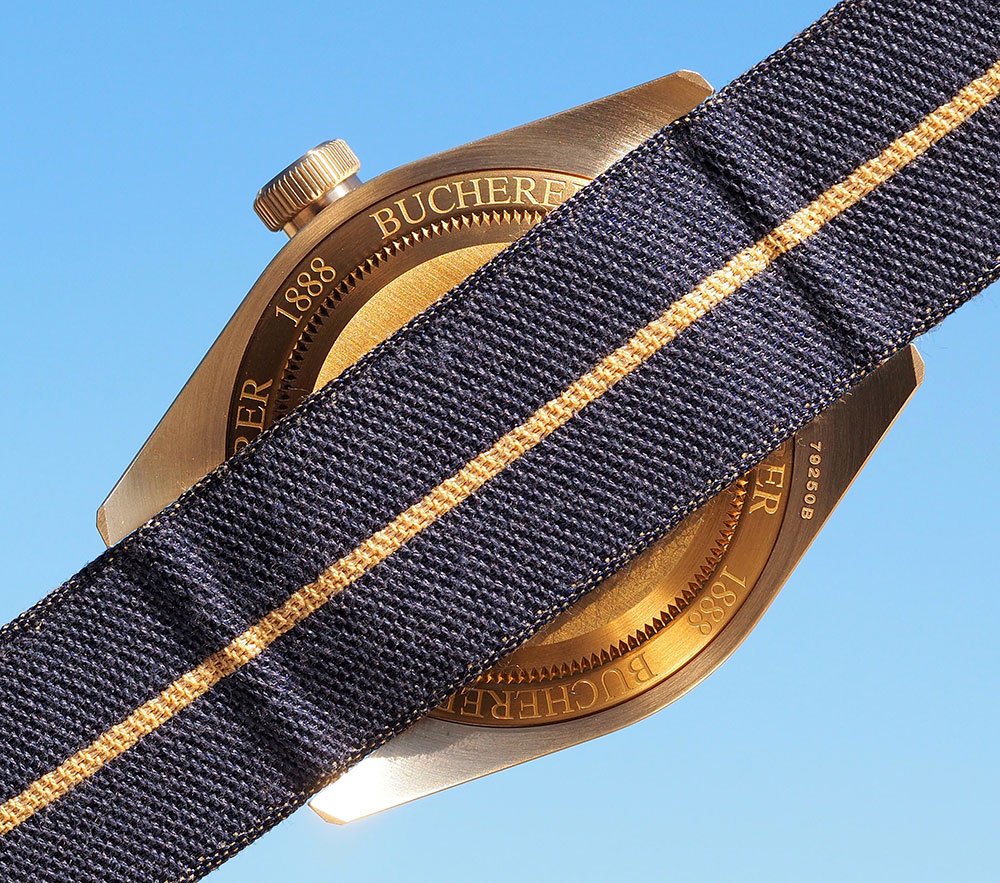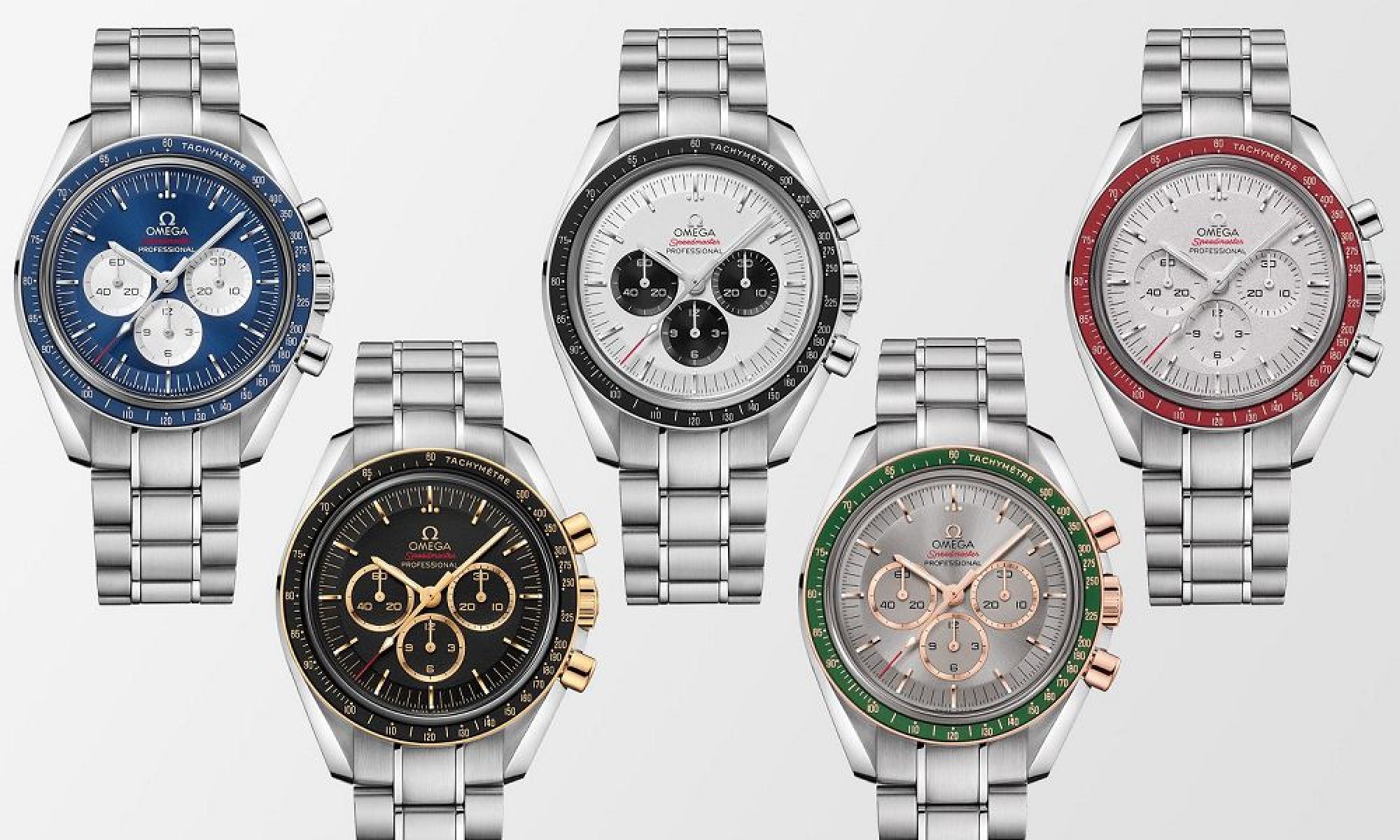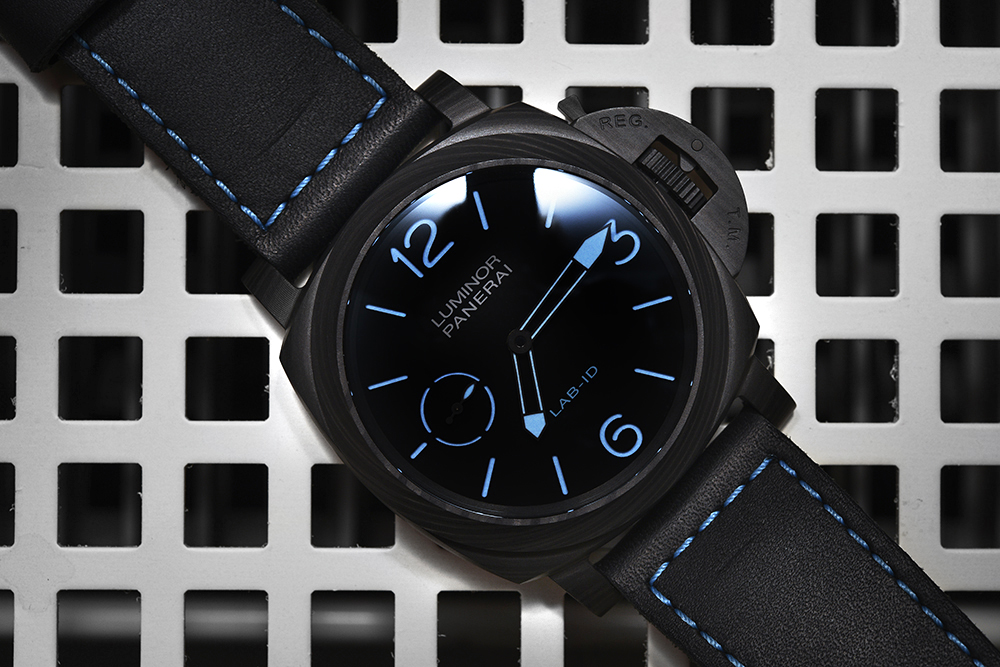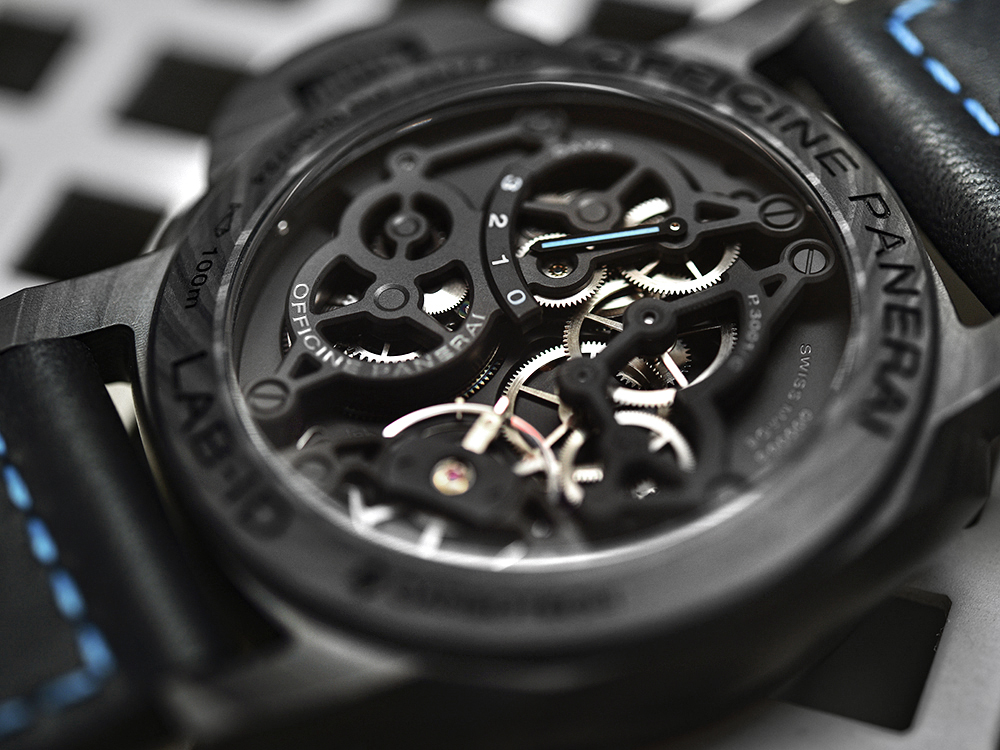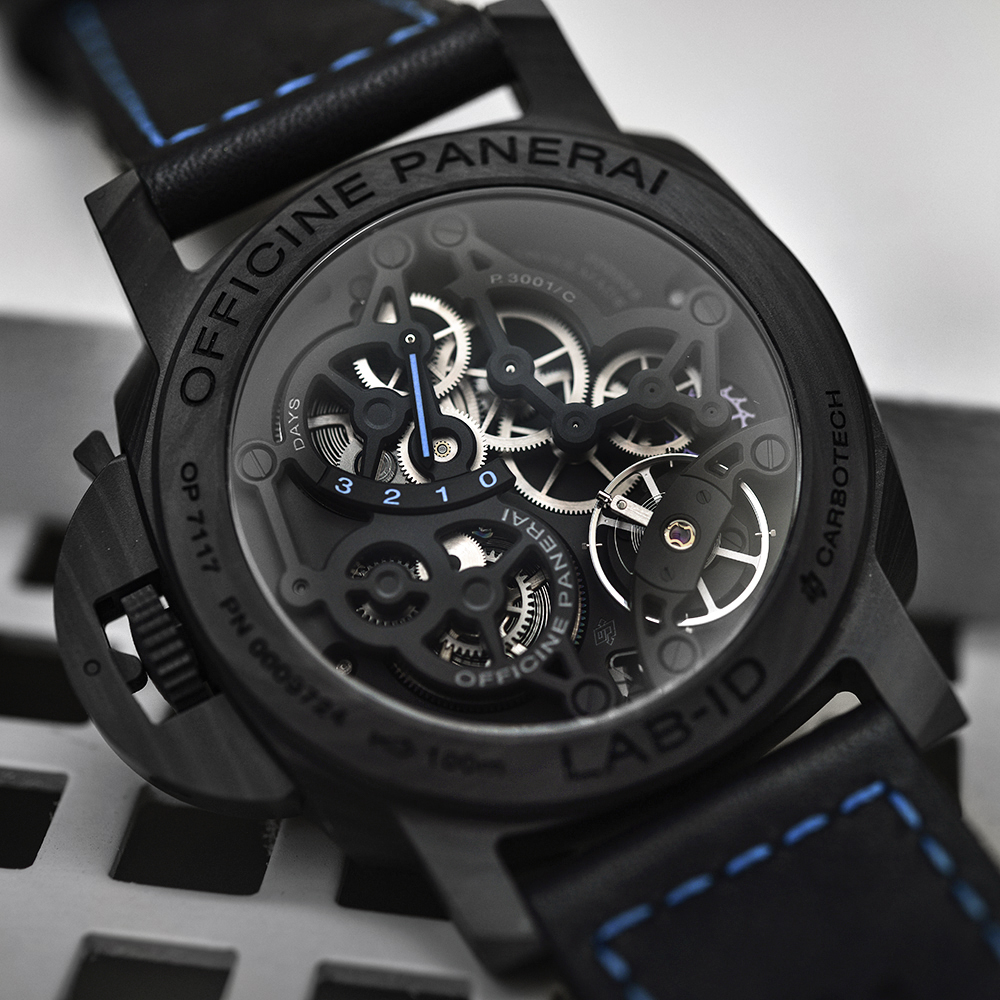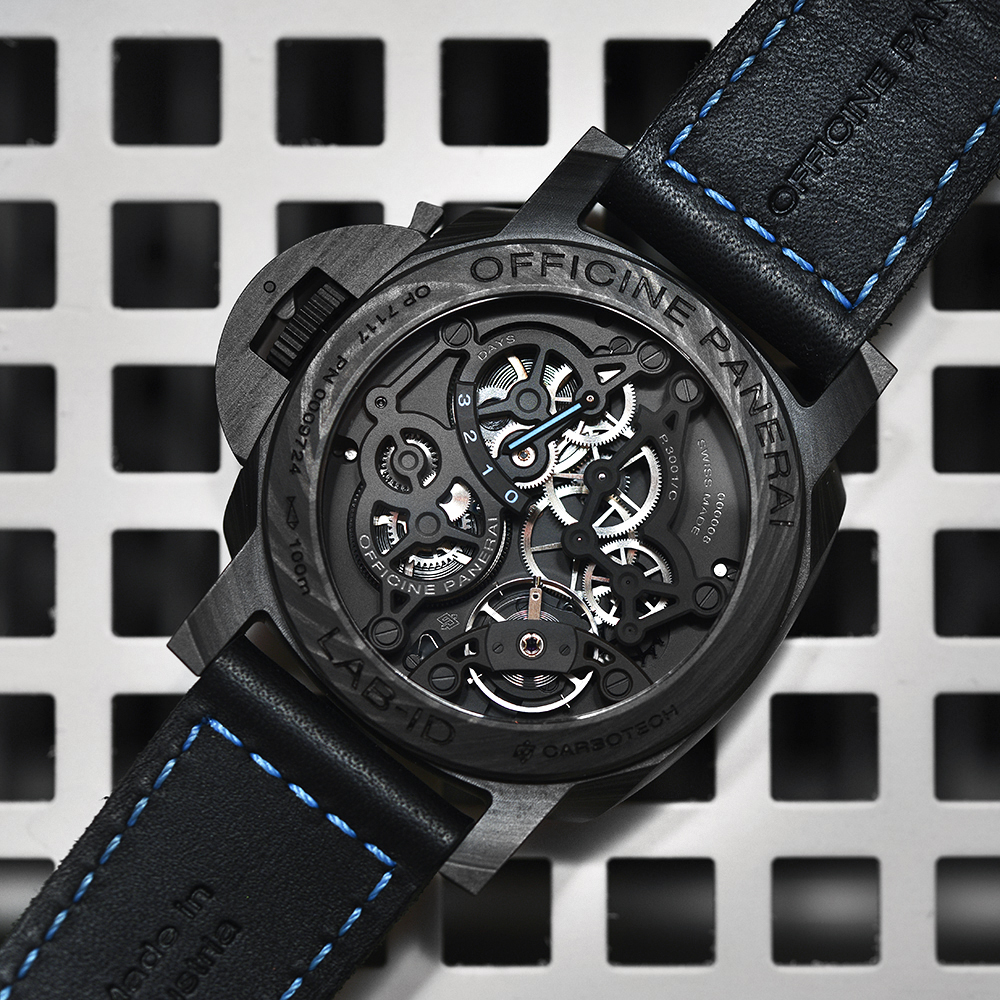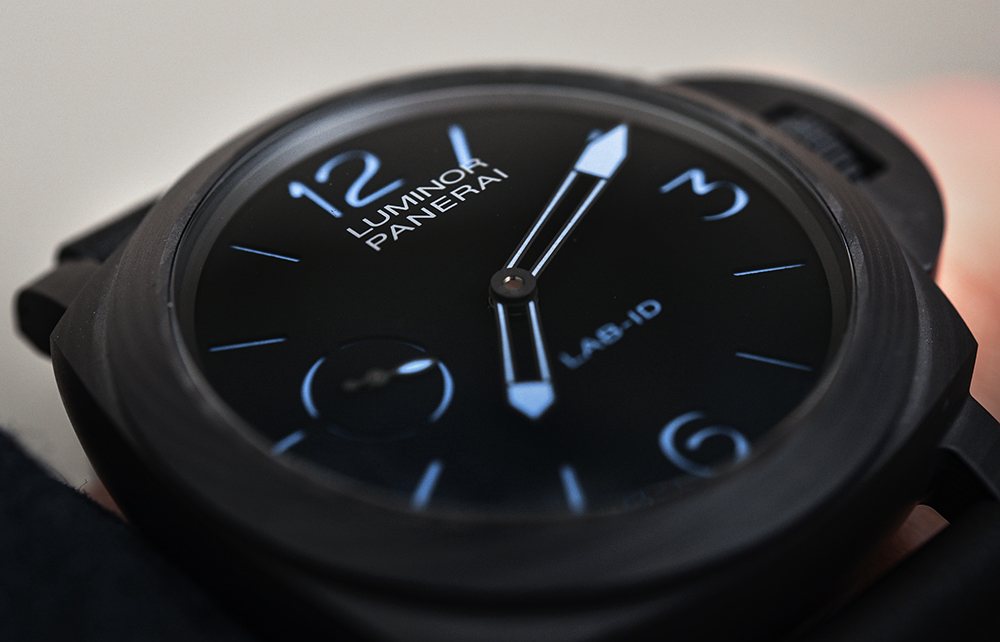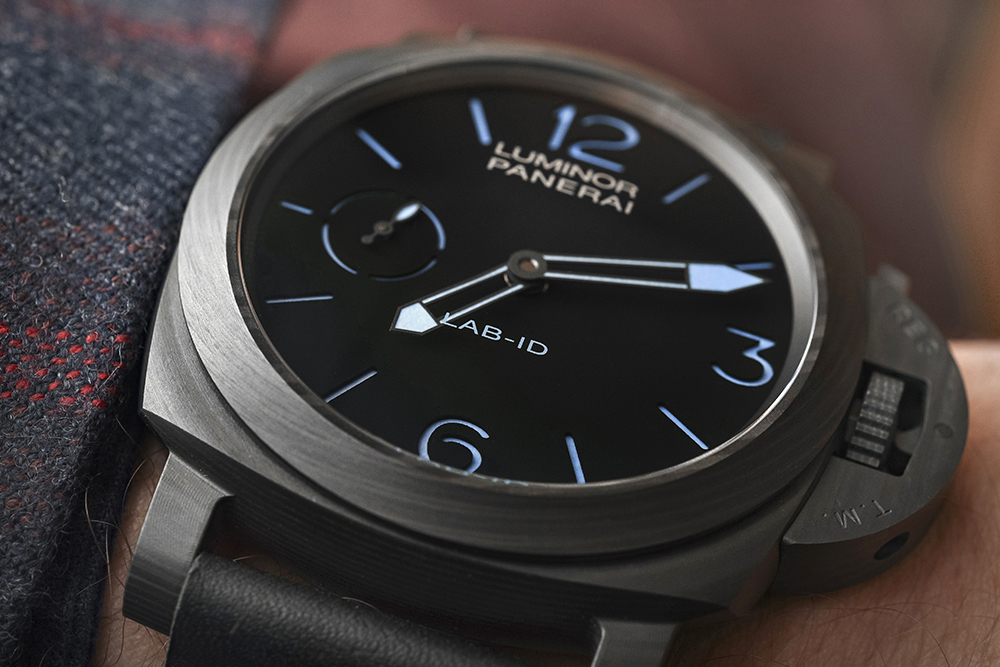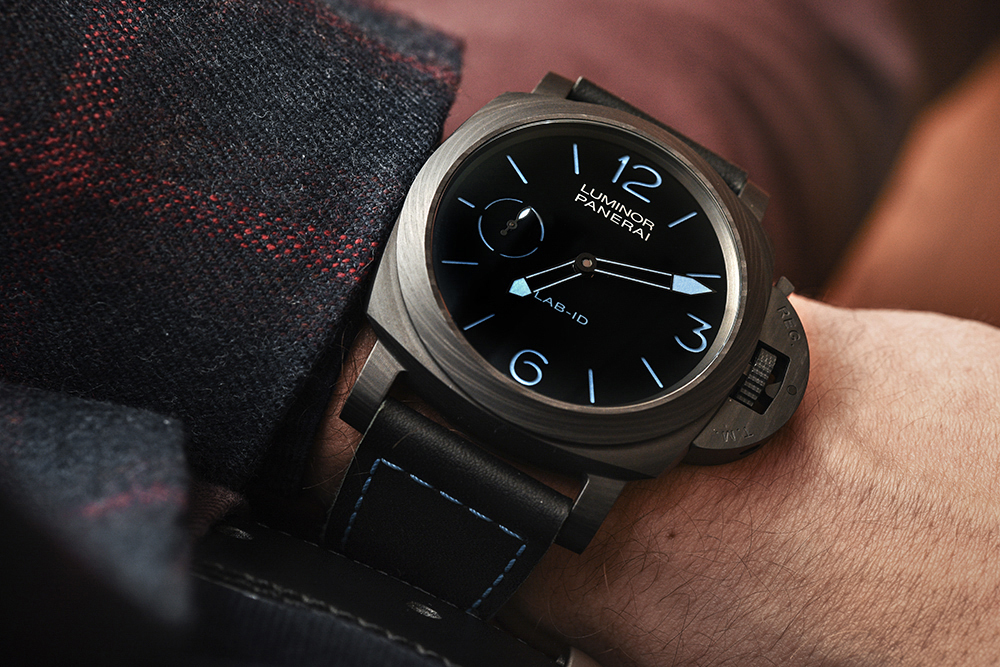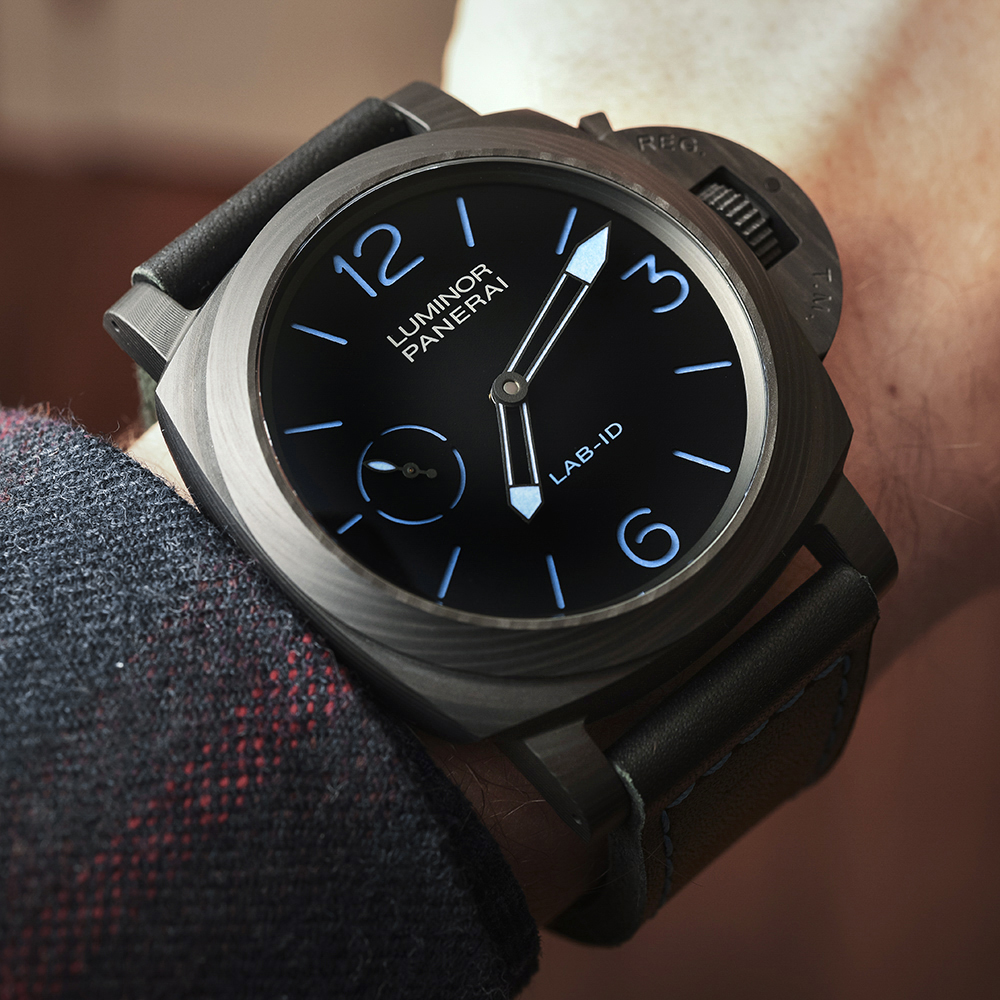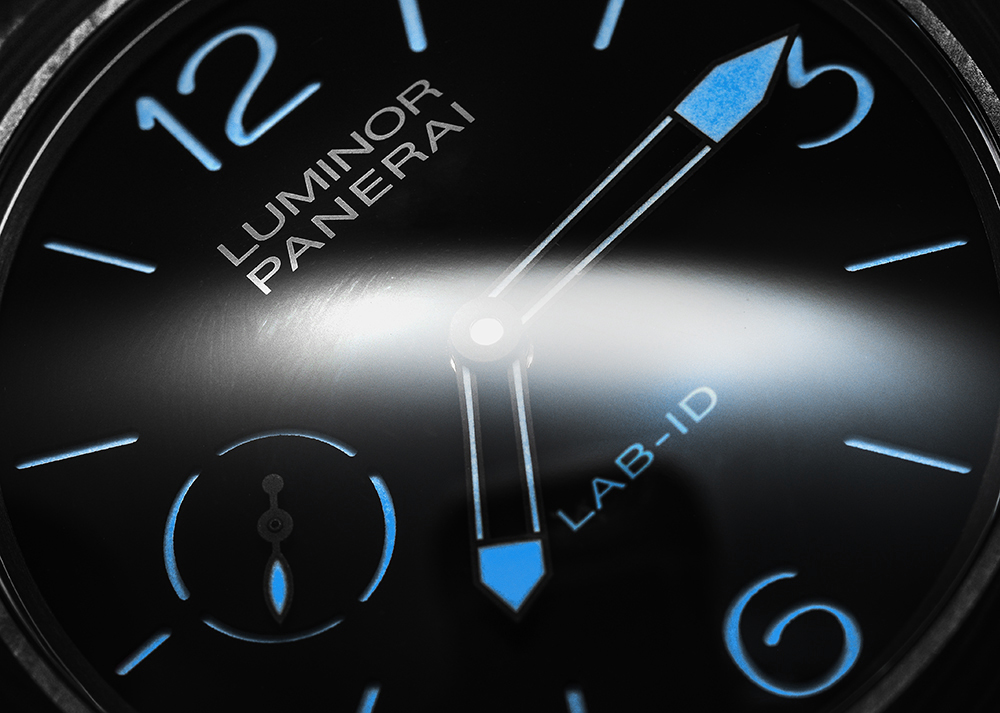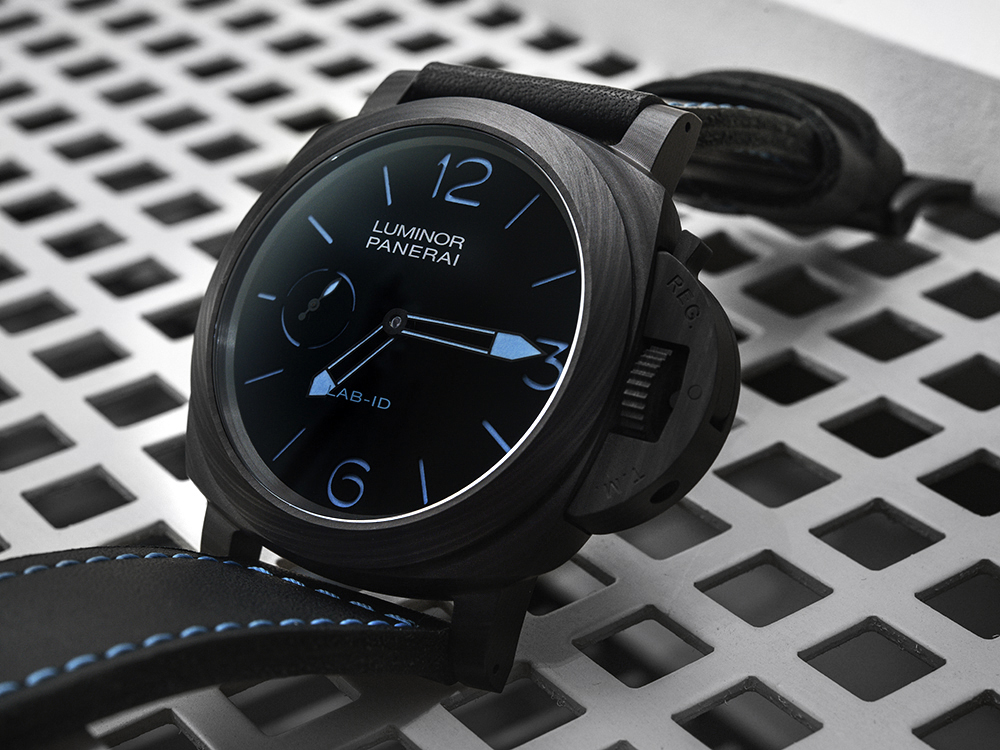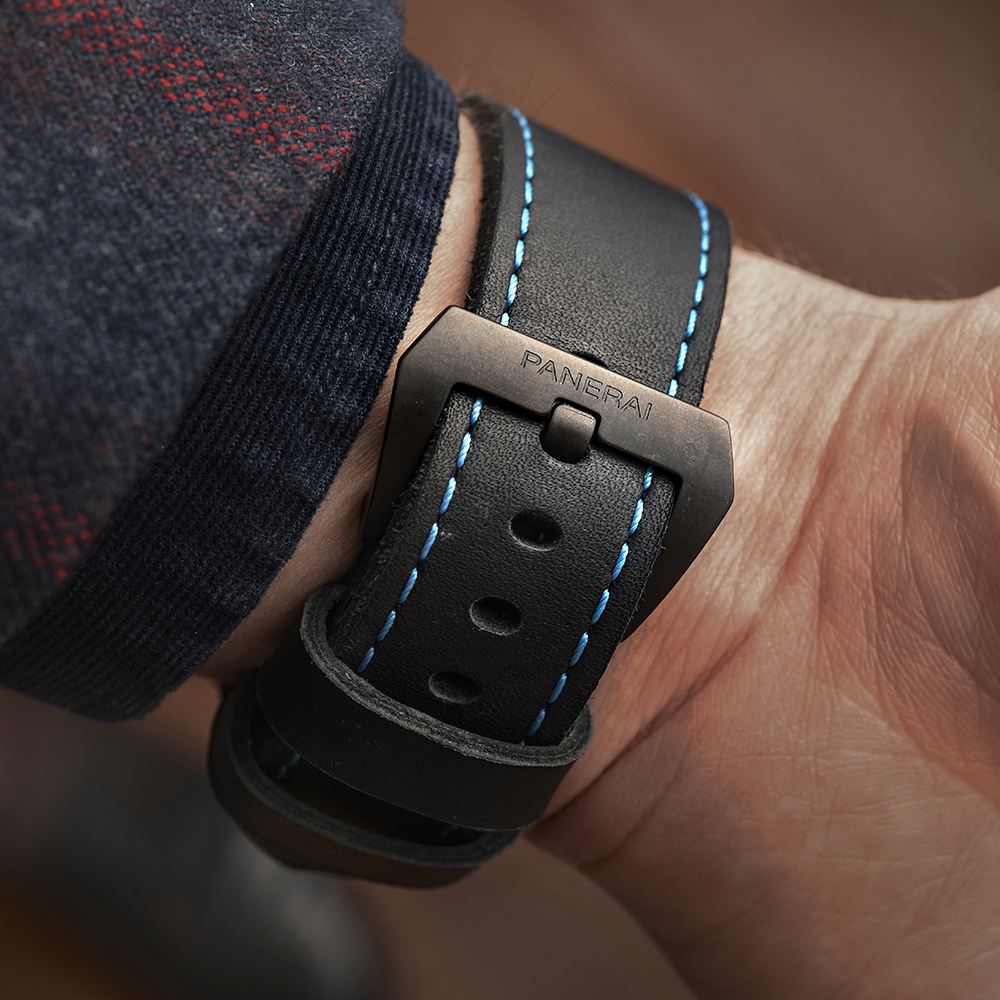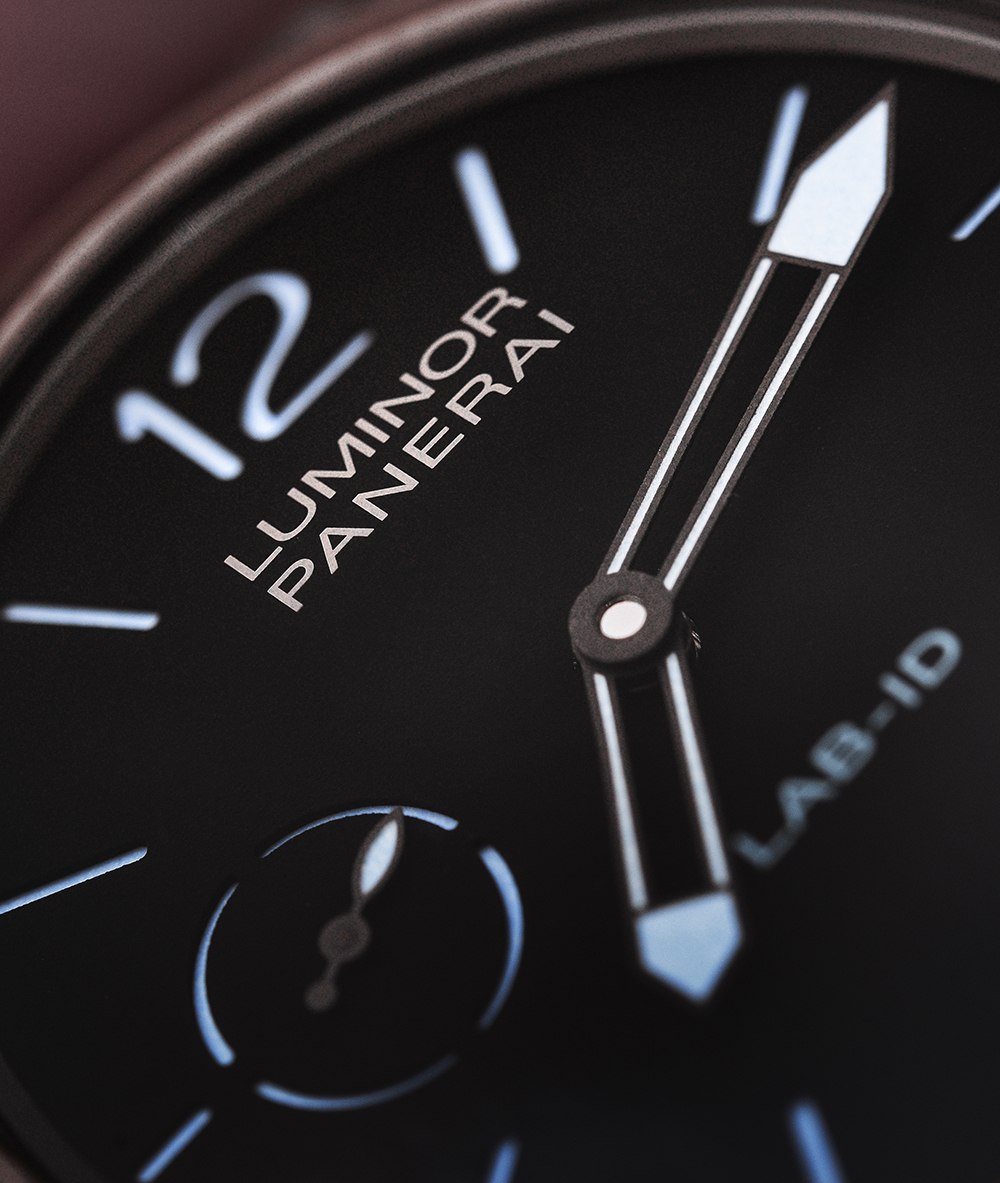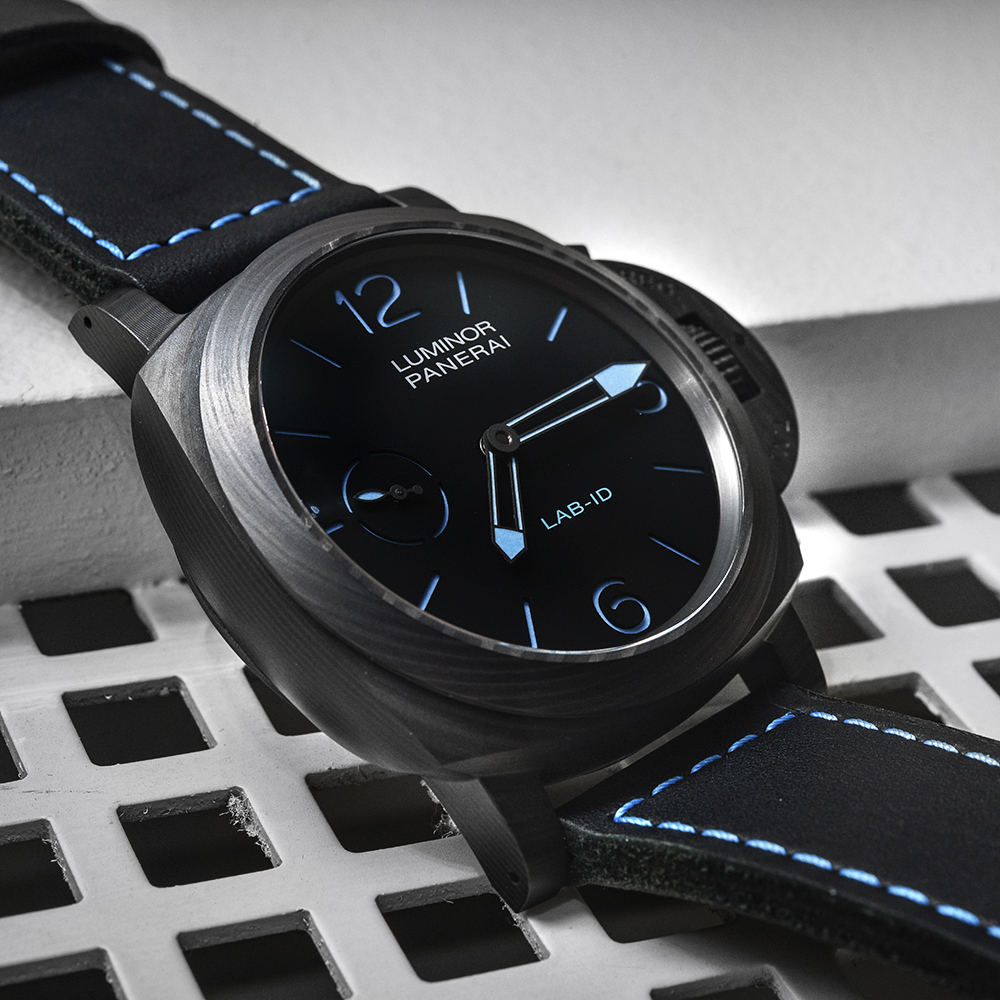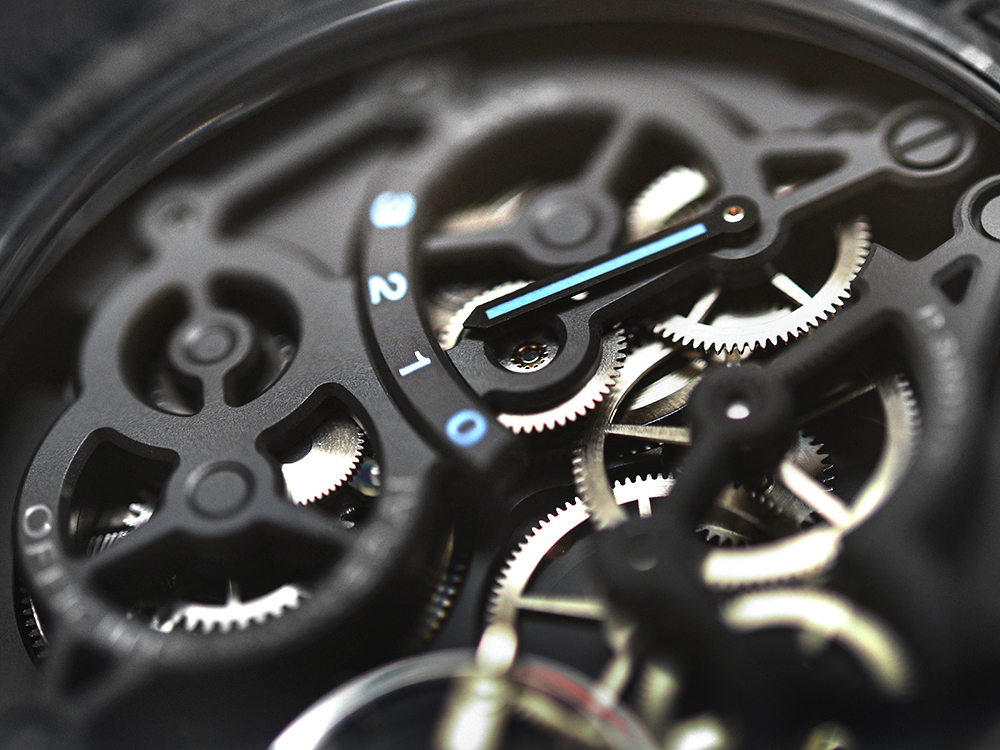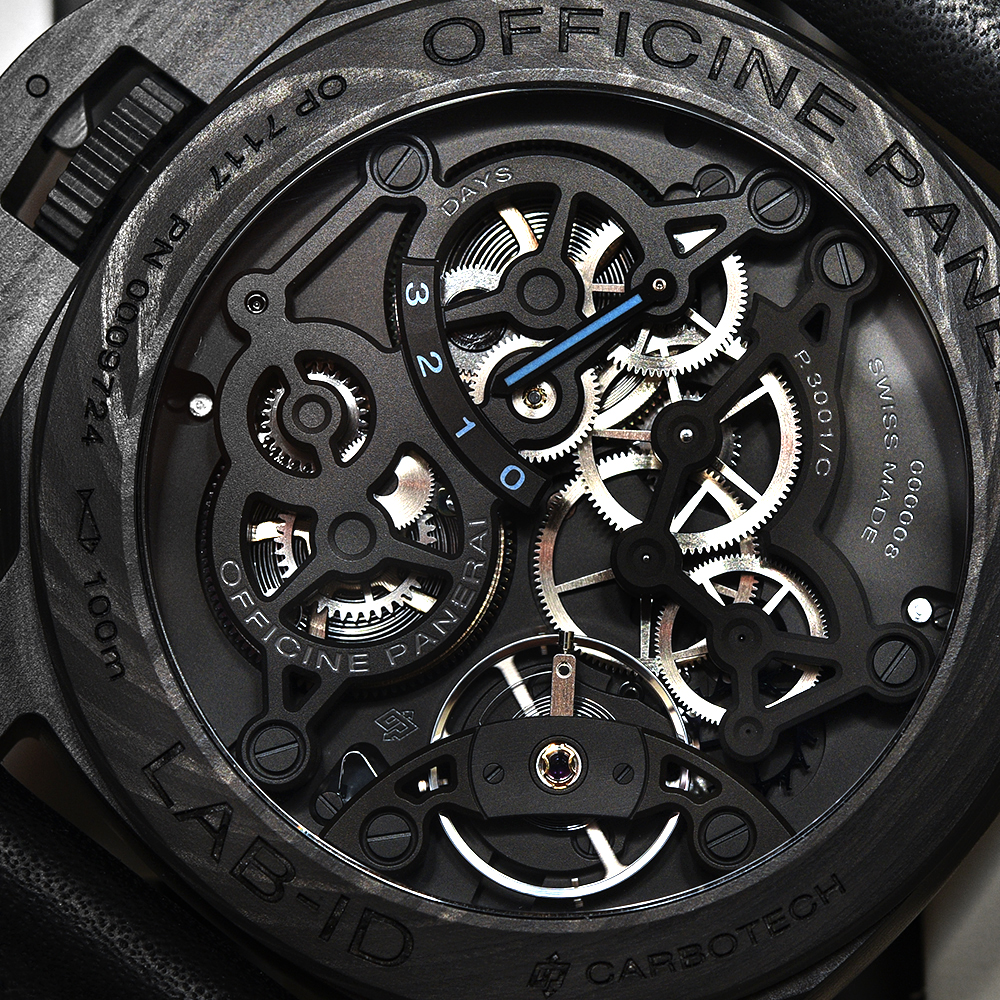In 2017, with Ferrari design objectively at one of its all-time highs, Ferrari has finally conceived its first ever wristwatch. They have done so in partnership with – you guessed it right – Hublot, and the result of their collaboration comes in the unusual form of the Hublot Techframe Ferrari 70 Years Tourbillon Chronograph. It is a watch that, by definition, has tested the horological prowess of the designers and engineers of one of the world’s leading car manufacturers.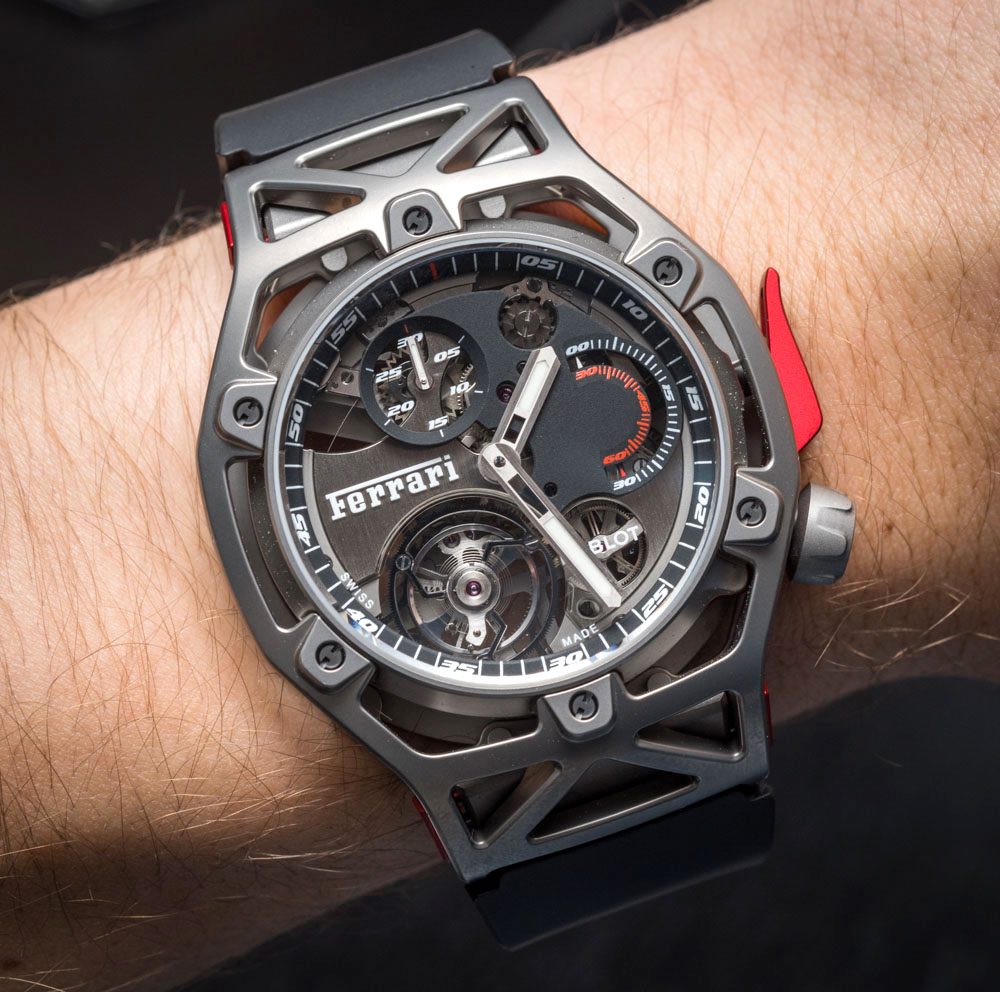
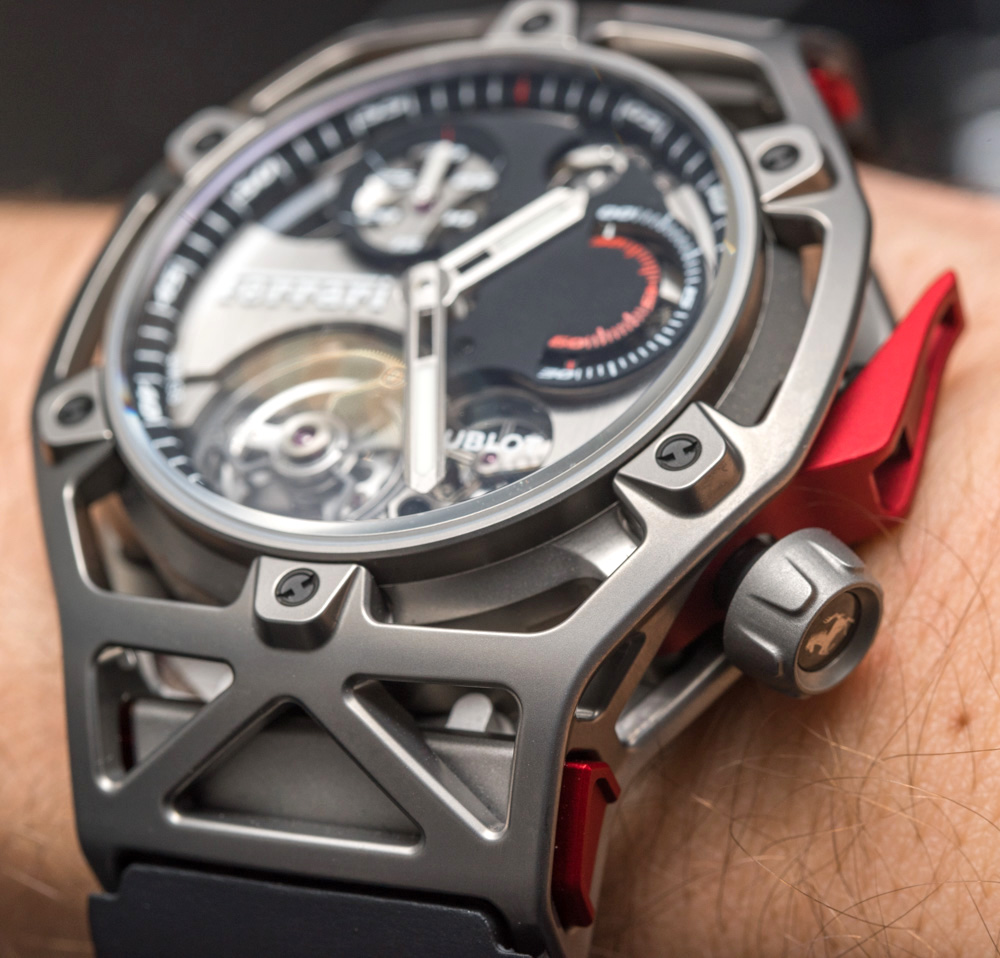
Conceived by the Ferrari Design Center in Maranello and built by Hublot, the black rubber straps Hublot Techframe Ferrari 70 Years Tourbillon Chronograph copy watches (initially covered here) gives a fresh twist to the seemingly ever-lasting cycle of the usually extremely stale “[watch_brand_name] asks for attention by partnering with [car_brand_name]” collaborations by letting the eggheads in Maranello have their go at making a watch.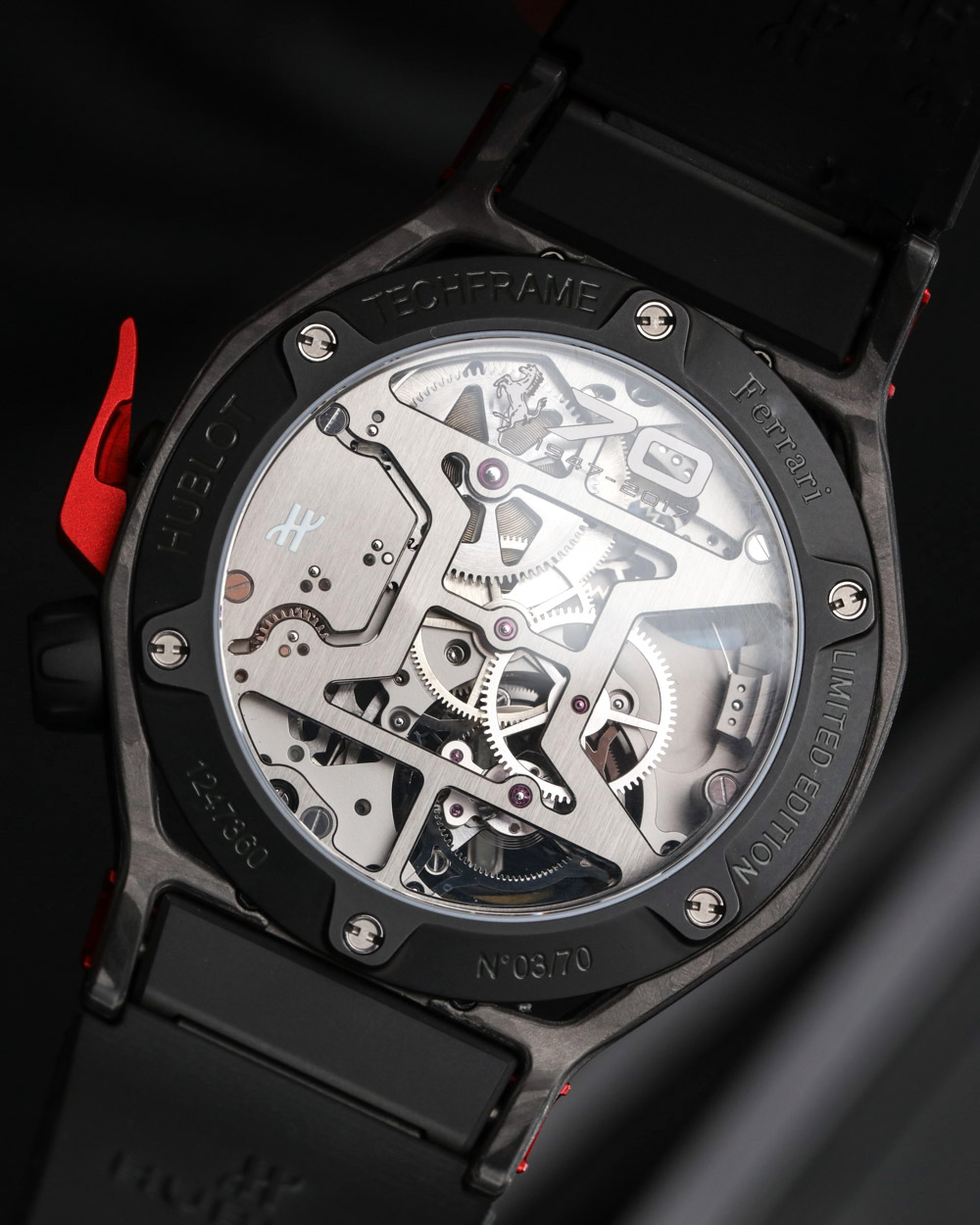
What do $295 quartz beaters, Movado, Cabestan, Panerai, Girard-Perregaux, and Hublot all have in common? They all have legally made watches with the Ferrari logo on them. However, to be fair, Hublot has far and away made the most of its partnership with Ferrari (review of the Hublot Big Bang Ferrari here, for example) who, in all likelihood, must have enjoyed the idea of working with a partner actually interested in dedicating separate, well-developed, versatile collections to the prancing horse, as opposed to just name-dropping Ferrari.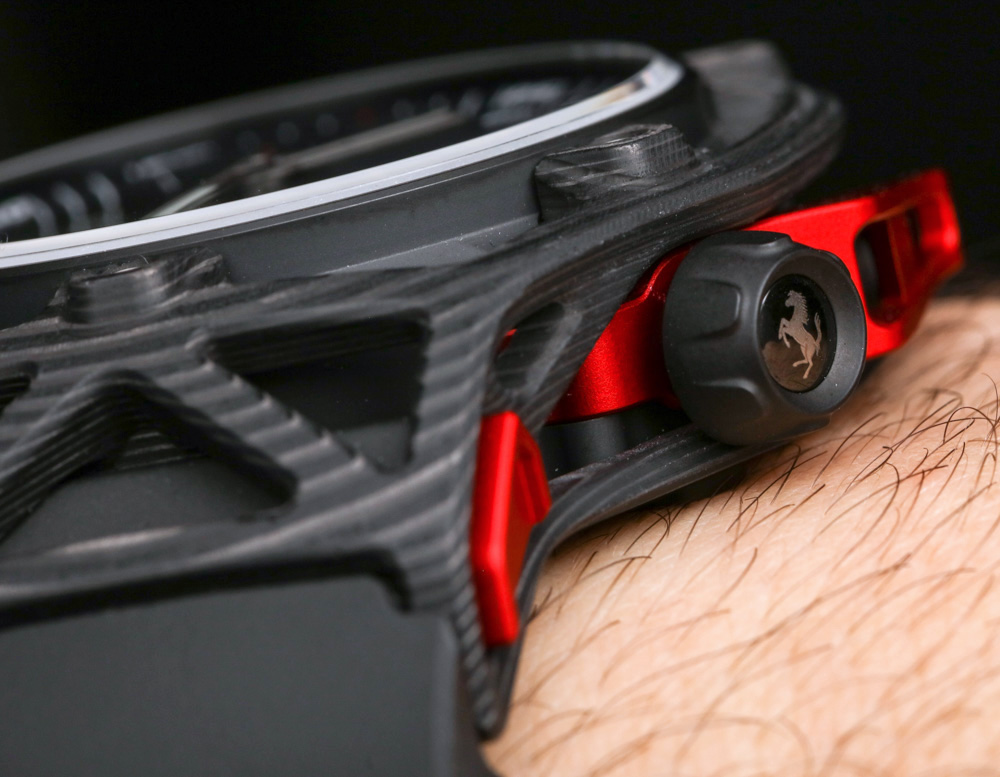
If you’re a long-time watch enthusiast, you are at this point more than familiar with the versatility as well as strict limitations of watch design. But when I first heard about the Hublot Techframe, I did wonder what the process was like for Ferrari in understanding the spatial, technical, functional, and technological limitations (and possibilities!) that lie in watchmaking.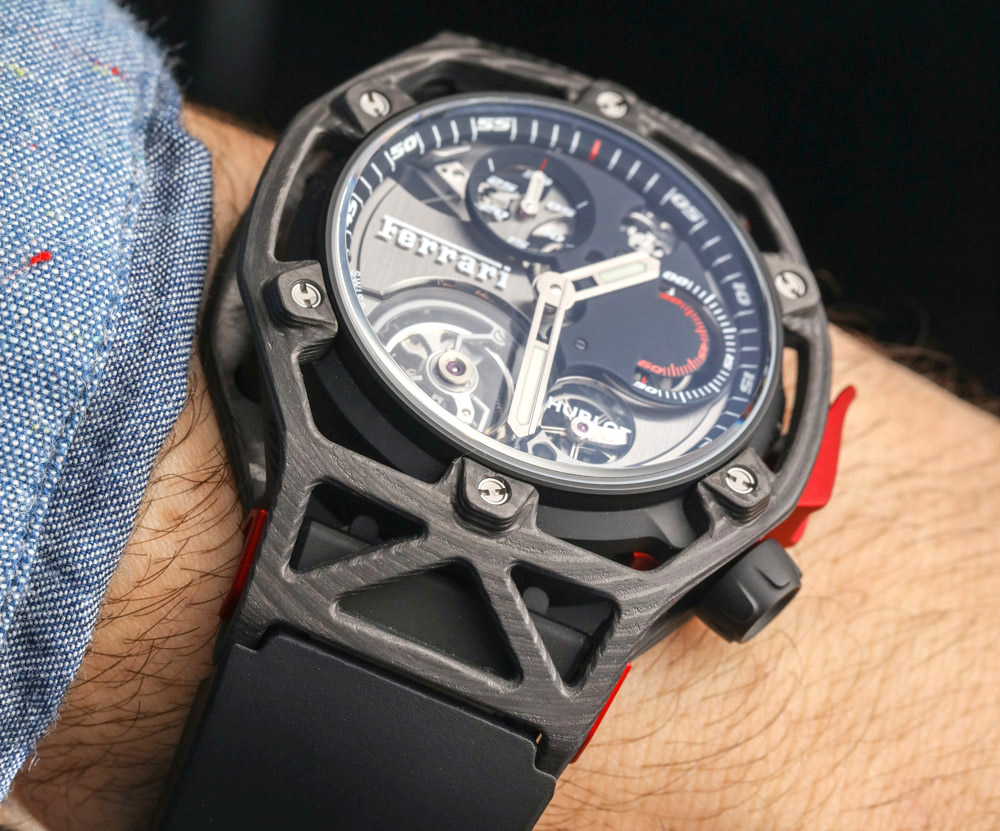
Both Hublot and Ferrari are adamant about this watch having been primarily designed by Ferrari. And as such, under the leadership of Ferrari Head of Design Flavio Manzoni, the black carbon cases Hublot Techframe Ferrari 70 Years Tourbillon Chronograph fake watches ‘ unlikely looks were wrapped around Hublot’s (ex-BNB Concept) tourbillon monopusher chronograph “engine.” We’ll work our way from the outside towards the innards of the Hublot Techframe.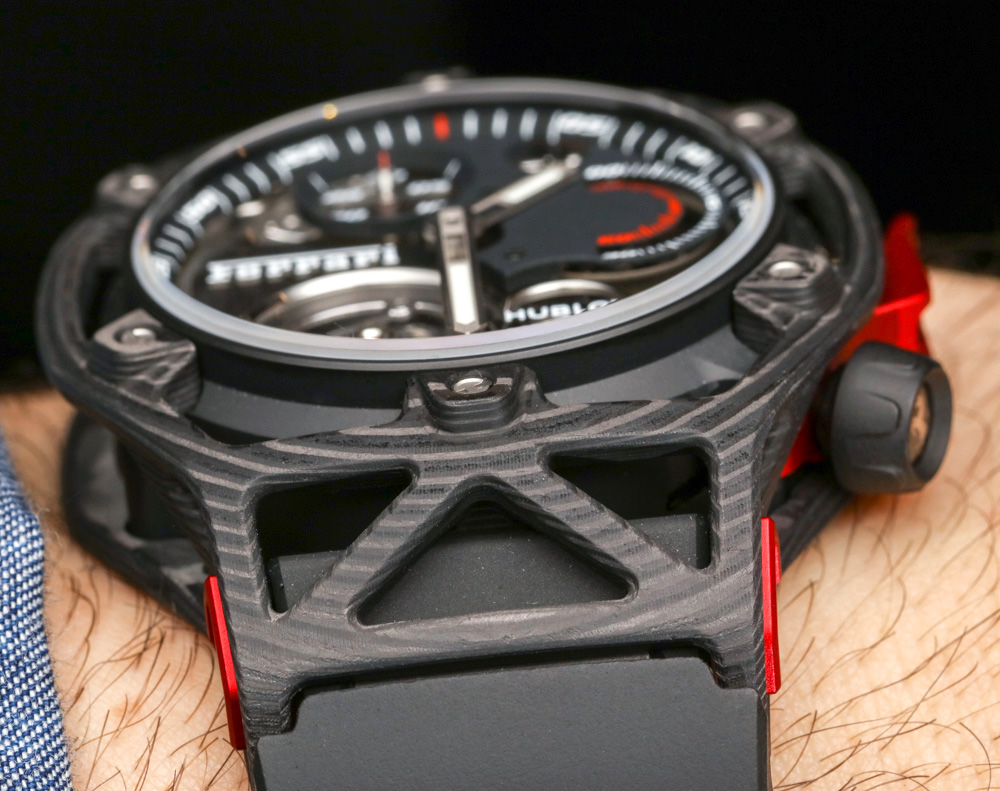
You need not look at it for long for the Techframe name to make sense: the “lattice structure” of the case is a unique case design that harnesses the combination of lightweight materials and as many negative spaces (or cutouts, if you like) as possible, without compromising structural rigidity.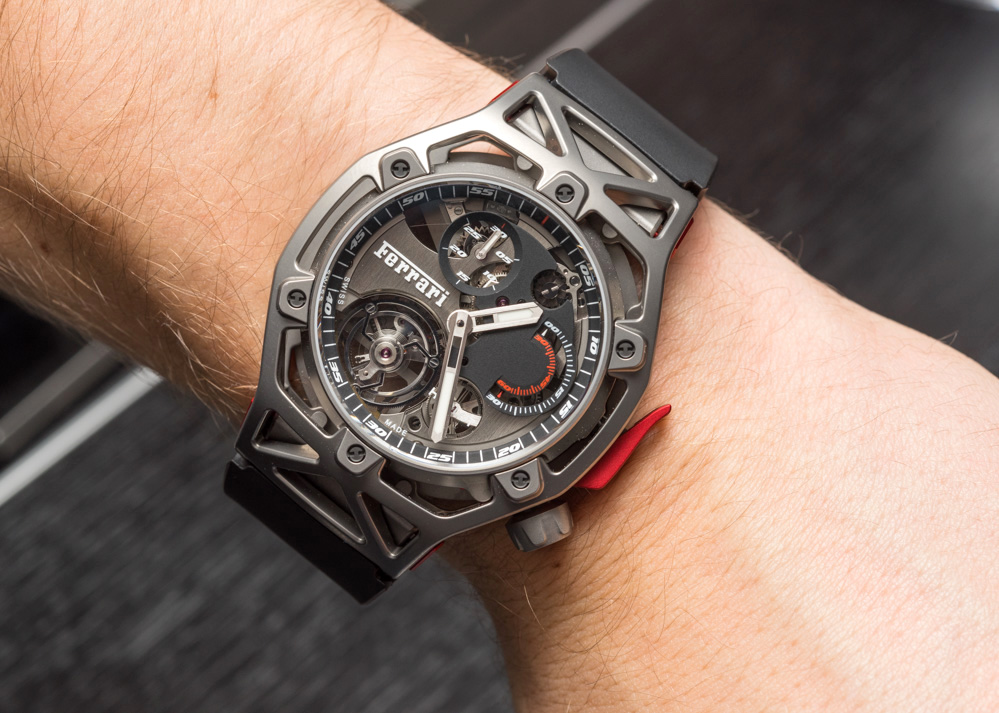
Available in titanium, King Gold (which we couldn’t see hands-on, you know, “because Basel”) and PEEK (Polyether Ether Ketone) Carbon, a multi-layer hypo-allergenic material made from, get this, particularly long carbon fibers. Nothing like a material that has ether twice in its name and is crafted from nice and long pieces of carbon fiber.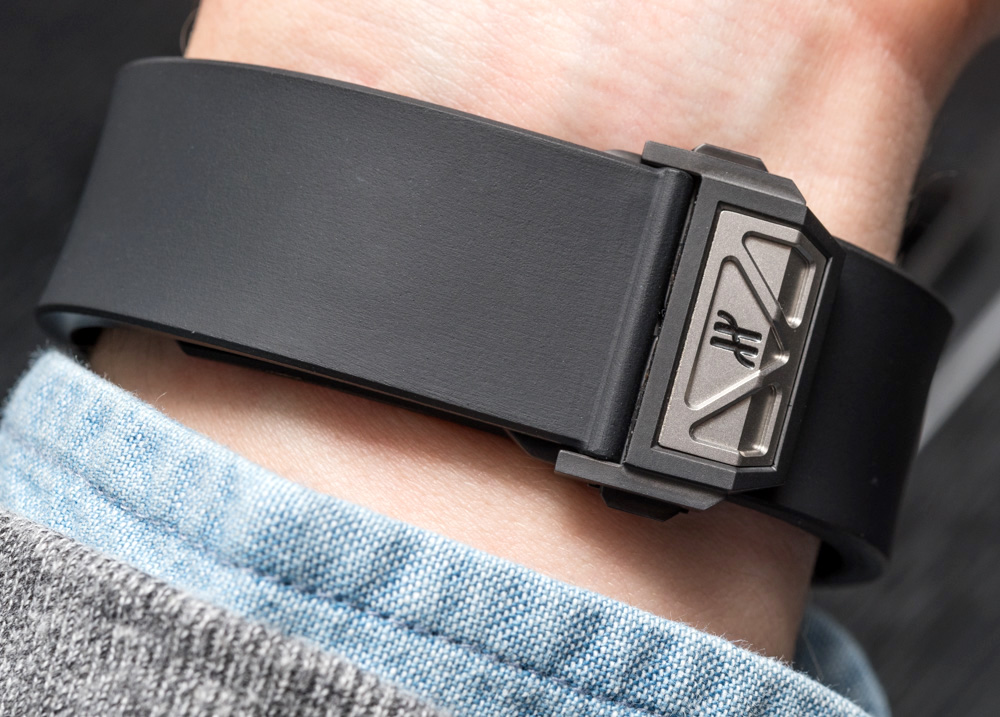
Being the hopeless, lifelong car lover that I am, hand on heart, the first thing I thought of when I saw the Hublot Techframe Ferrari 70 Years Tourbillon Chronograph case’s cutouts was the dashboard of the Ferrari 360 Modena. The combination of the circular and organic shapes seem to be shared between the two. Even if contemporary Ferrari dashboards have gone on to be more like spaceship cabins than traditional car interiors, this nod towards Ferrari’s long, though not necessarily loudly advertised link to organic design is something I presume the more dedicated fans will appreciate.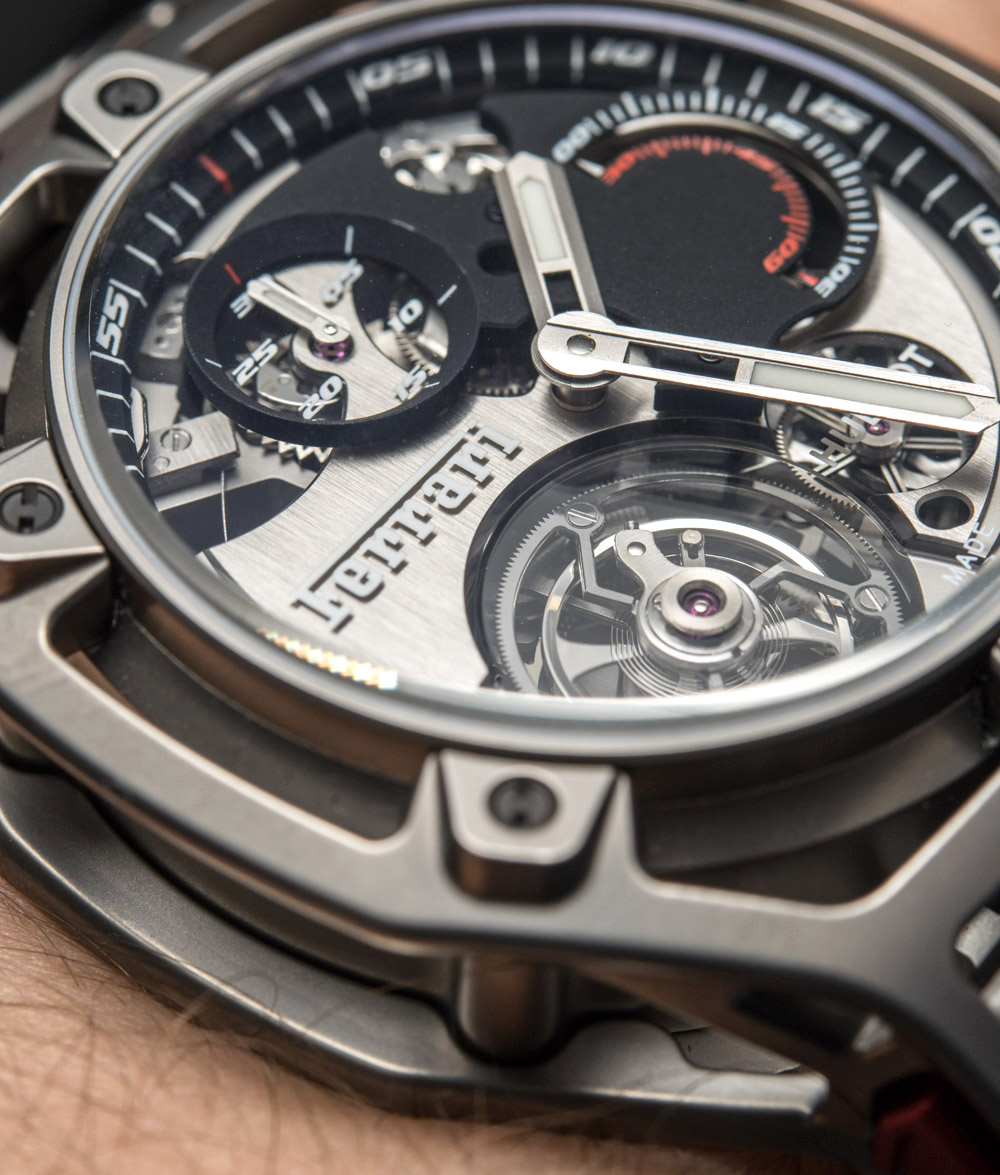
Negative spaces have for some time been absolutely essential in great car design – as cars are getting more bubbly and inflated in their exteriors in an effort to meet ever stricter safety and emissions regulations, these “concave,” dark areas help enforce a muscular, powerful, visually more fascinating aesthetic. Watches use it almost exclusively in the skeletonization of movements, but given the pace at which case manufacturing has been advancing lately, we shall see it more often in watch exteriors as well.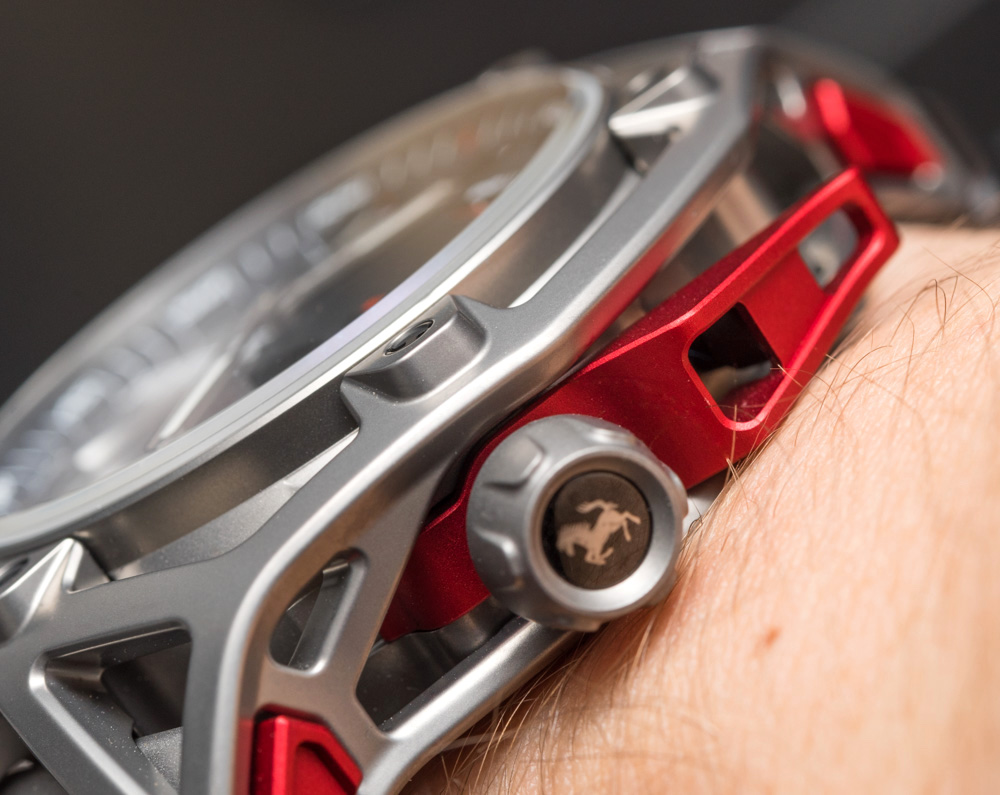
I will say that the Hublot Techframe Ferrari was one of the watches I had been most looking forward to seeing at Baselworld 2017 – not because it was designed by Ferrari but because of the case itself. I wanted to see its details and appreciate it hands-on and then by reviewing the images I took, as opposed to just by looking at computer renders.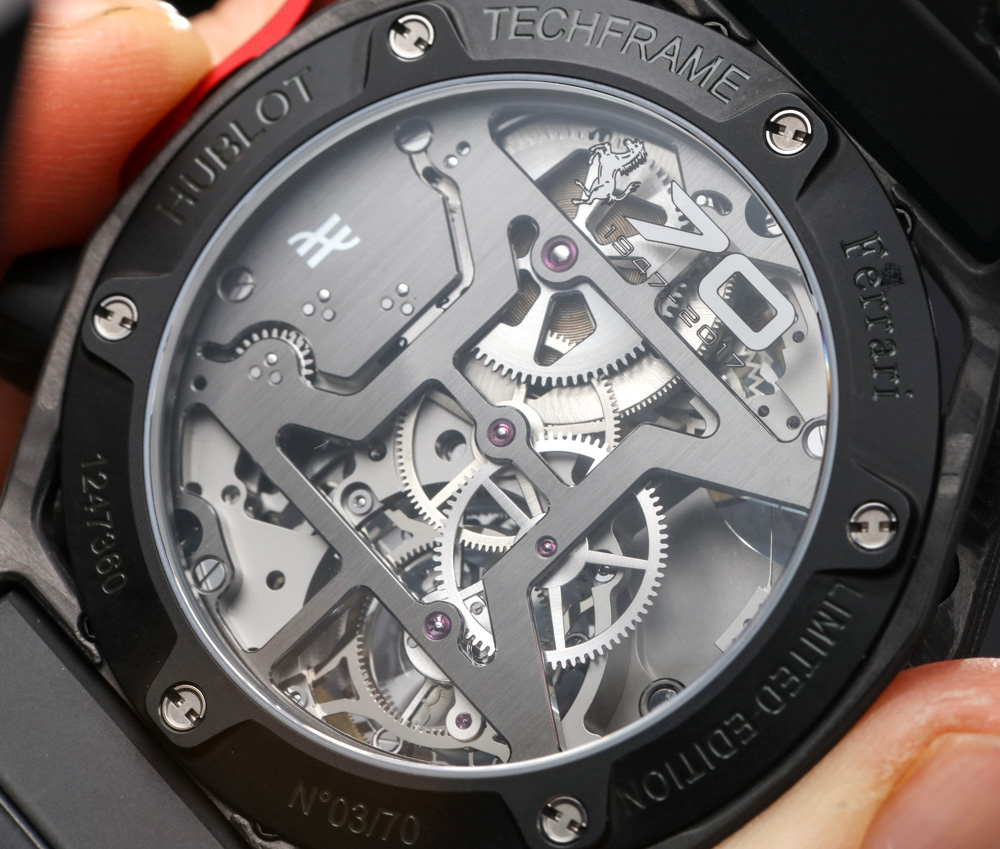
I have to add, though, that I was both amazed and disappointed by it at the same time. The case’s execution, design, and little details are absolutely incredible to look at, with the satin-finished titanium variant being my favorite of the bunch. The PEEK carbon, as high-tech as it may look, adds too much distraction with its black color and aggressive layering from the case’s fascinating looks.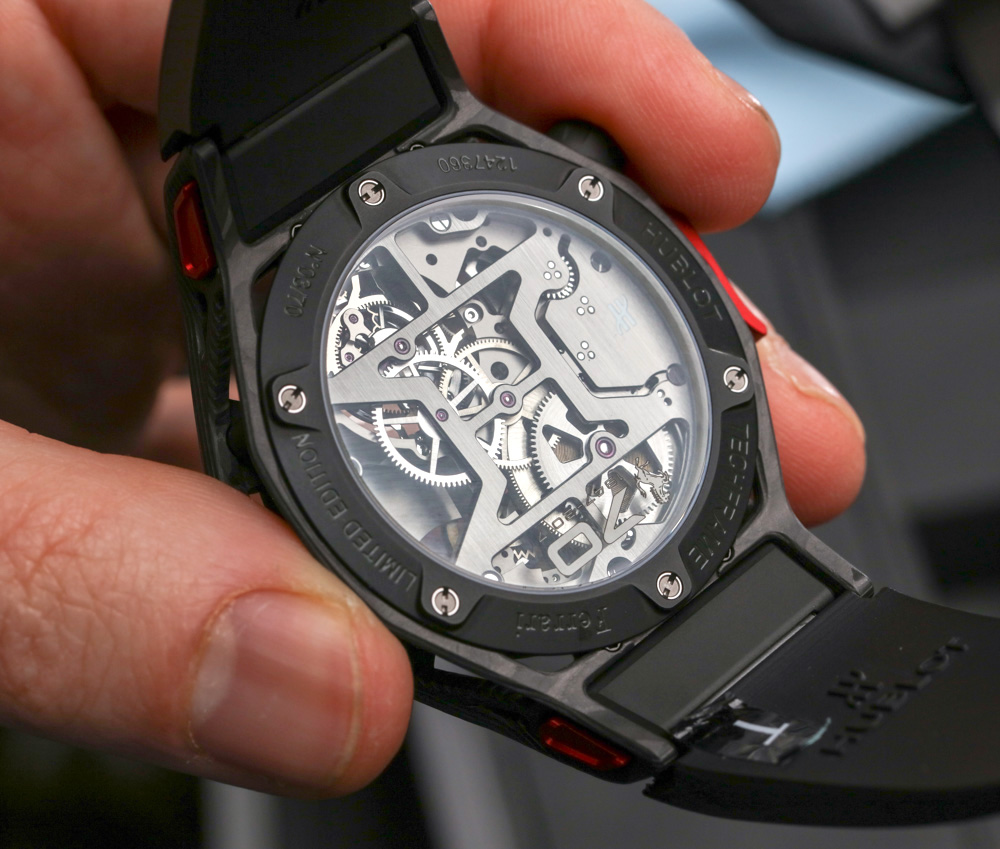
The disappointing bit came in the proportions: the Hublot Techframe Ferrari is 45mm wide and 14.80mm thick – typical dimensions for modern, highly complicated watches. What the spec sheet doesn’t say is just how “long” the watch actually is: for starters, the lugs extend very far out from the edges of the dial (or rather the non-existent bezel) and they do so at a rather flat angle. What adds more length to the watch is the stiff rubber strap that is attached to the lug structure in a way that makes them stretch out even further, making the Hublot Techframe Ferrari one very, very long watch – if you measure the furthest points to which the rubber strap naturally extends, despite the wholesome 45mm width, it is one very thin-and-long-looking watch.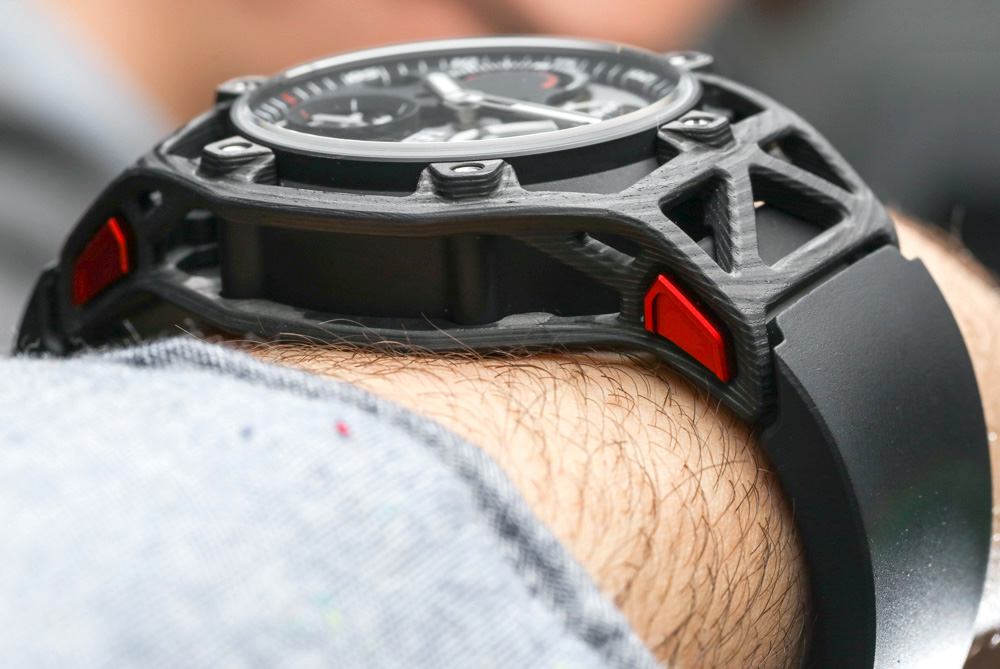
Ergonomics haven’t taken a backseat, however, as it has everything going for it to be a very comfortable watch to wear if you have a particularly wide wrist – the watch is light, strap integration is good and the material and buckle are all comfortable. In the image above, for example, you can see how the case and strap hug the wrist nicely, what you don’t see from this angle so easily is just how much the watch extends beyond Ariel’s wrist on the other side – I don’t think anyone with a sub-7.25″ (maybe more like 7.5″) wrist could get away with wearing this watch and look good doing it.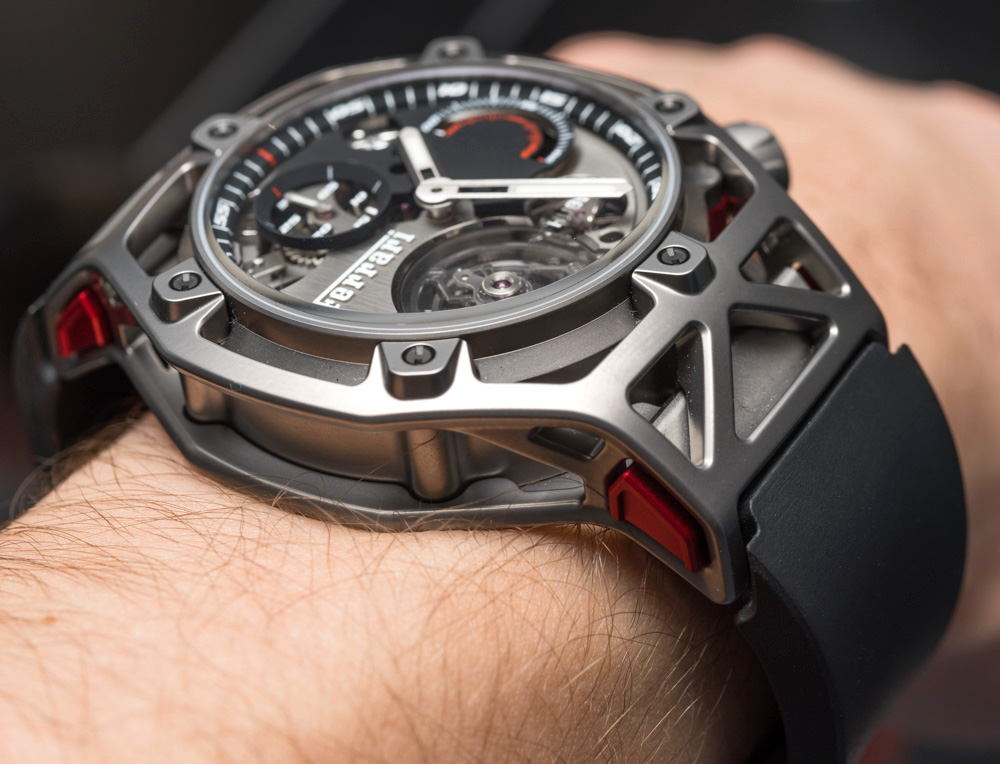
I spent all this time explaining this issue because I do genuinely like and appreciate the Hublot Techframe’s highly technical aesthetic. It is one very complex shape with the lugs and bezel all flowing into one, not to mention the red strap quick release pushers’ integration or all the space you could get lost in inside the case. It really encourages one to take a different look at case design and how space could be used more creatively in watches.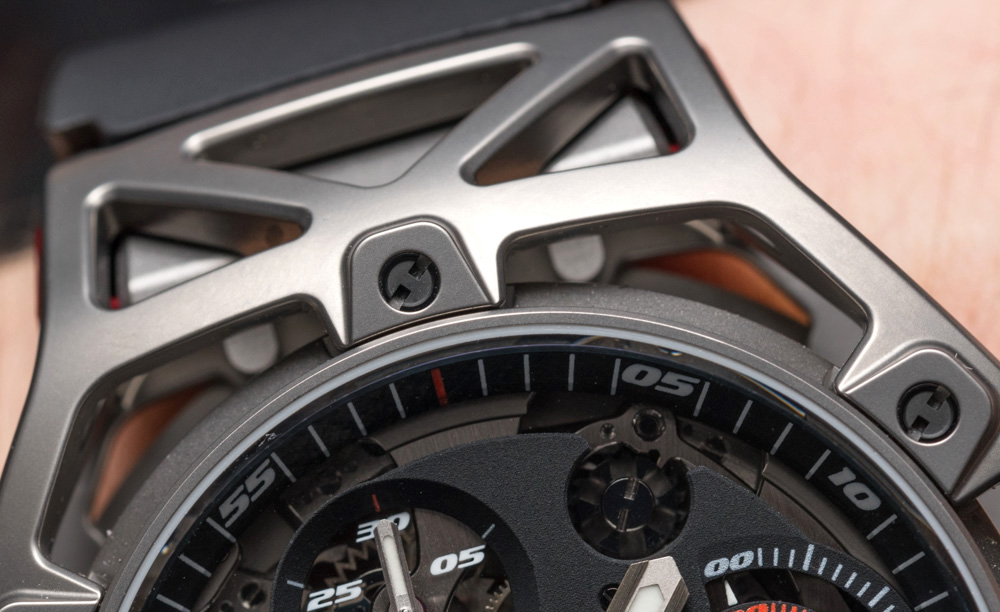

Neat additional details include a red pusher designed to mimic some Ferrari interior parts that here is actually used to start, stop, and reset the monopusher chronograph. Because someone with the mechanical sympathy of a frustrated ape deemed it better not to ask and just started pulling on said lever at Baselworld, it was broken on one of the watches (the titanium one, if I recall correctly), so if it looks flimsy, that is the reason.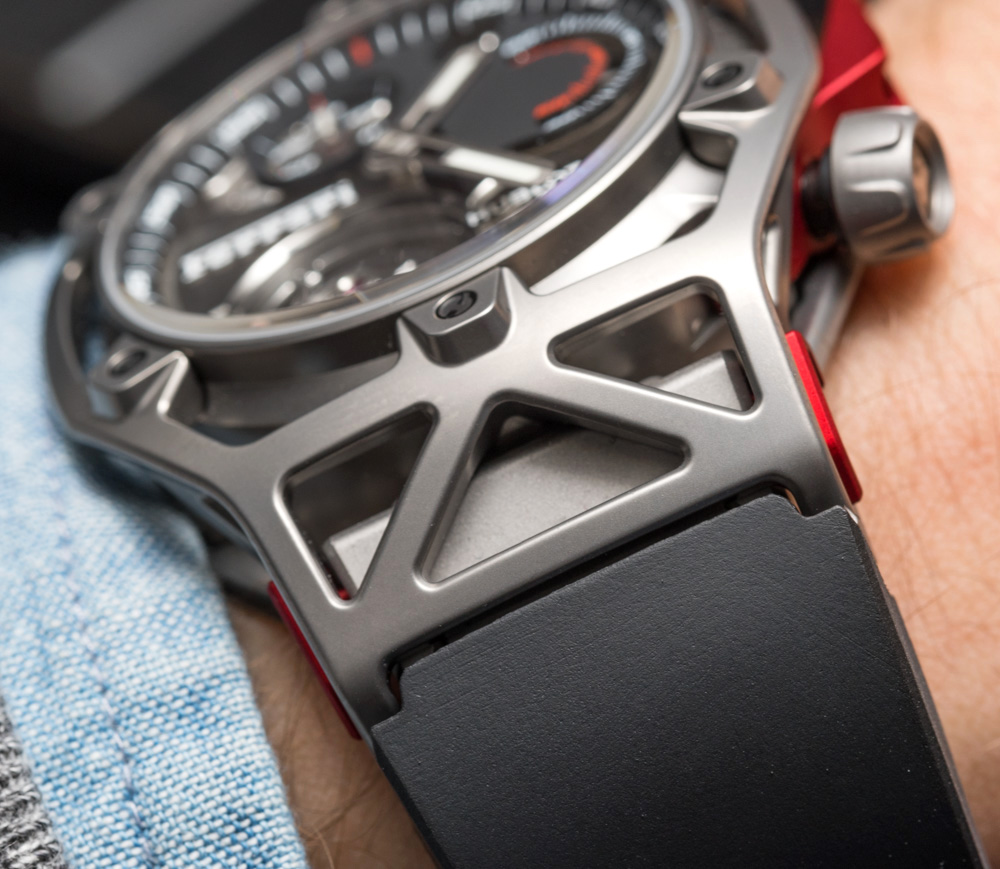
The movement powering the Hublot Techframe Ferrari is the HUB6311 caliber with 253 components – not a lot for a tourbillon monopusher chronograph –, it runs on 3Hz and offers five days of power reserve. The movement looks high-tech and cool both in its color and architecture with its bridges treated with ruthenium anthracite. It isn’t a movement dripping with traditional haute horlogerie decorations, though: no perlage or Geneva stripes, everything is dressed in this 21st-century pale grey – reminiscent more of engine blocks of today than watch movements of yesteryears.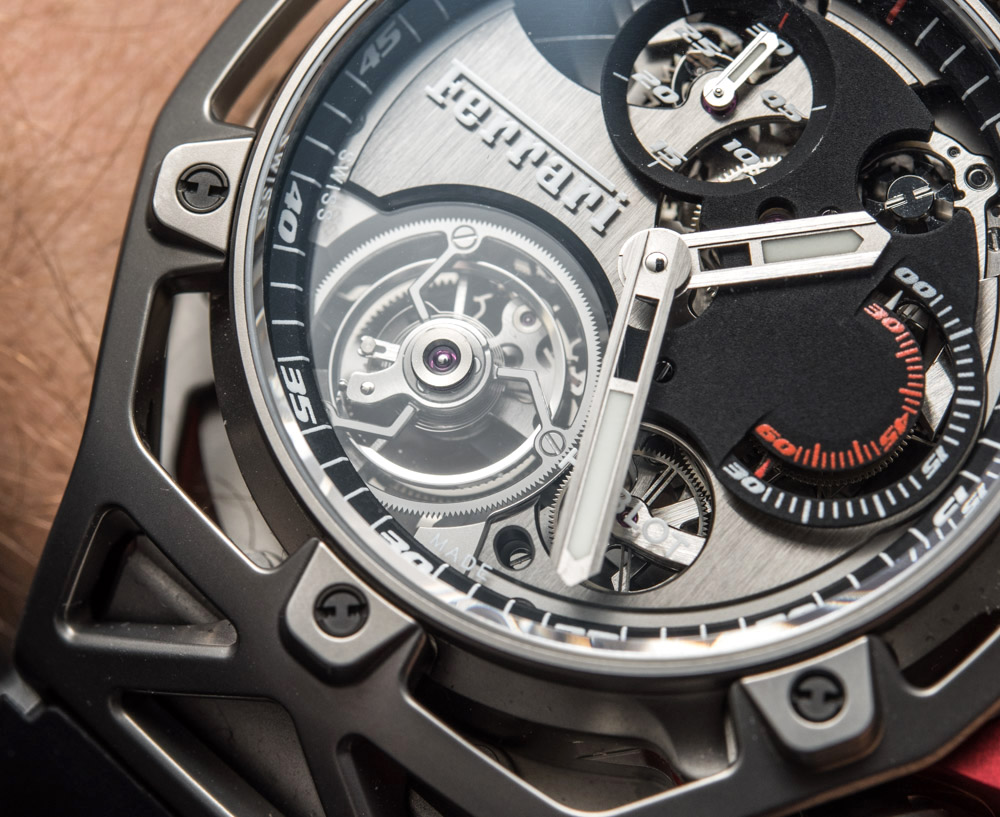

Ferrari turns 70 this year, and while it is a year that will no doubt be packed with amazing celebratory releases, for us watch lovers their first ever Ferrari-designed watch will definitely remain an outstanding one among those. Ferrari has done a commendable job in creating an exterior that corresponds well with how far they have come in car design, and kudos to Hublot for following through and making something as unusual as this Techframe design possible. Too bad that real-world wearability takes a back seat and that the dial isn’t really anything crazy or new to write home about – though it is legible for such an open architecture.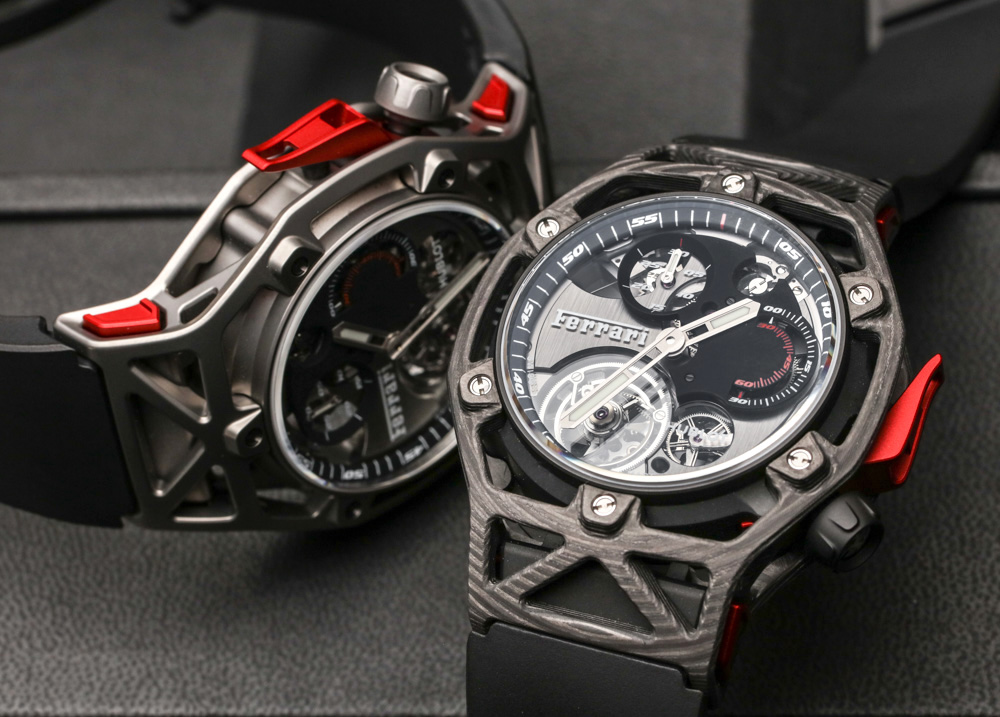

Here’s hoping for some more “lattice structure” cases from Hublot – Techframe does sound sexier, that’s for sure – though preferably with ever-so-slightly smaller and more wearable proportions… and, again, hats off to Ferrari for thinking outside the box. The most delicte replica wacthes are worthy to try.
